


SWORD P.04 PROSERV AND P.24 INTELLIGENT PLANT ARNLEA P.26 VIPER INNOVATIONS P.29 CAN GROUP P.31 FEARNLEY GROUP P.39 INTERVENTION RENTALS P 49 RCP P.45 LEYTON P.46 READ ONLINE AT Digital transformation In this issue... SEPT 2023 - ISSUE 72 GLOBAL ENERGY NEWS WORLD PROJECTS MAP DIGITAL TRANSFORMATION INNOVATION & TECH RENEWABLES CONTRACT AWARDS ON THE MOVE
STATS & ANALYTICS LEGAL & FINANCE EVENTS READ ON PAGE 4
DIGITAL TRANSFORMATION
DECOMMISSIONING





+44 (0) 1779 479 742 www.jbsgroupglobal.com Dales Industrial Estate Peterhead, Scotland, AB42 3GZ info@jbsgroupglobal.com Using the best available technology to deliver innovative engineering solutions globally Subsea Excavation Blast Containment Screw Conveyors Steel Fabrication Our services include: •Screw Conveyors •Steel Fabrication •Blast Containment •Subsea Excavation
A WORD FROM OUR EDITOR


Welcome to the September edition and the ‘SPE Offshore Europe’ edition of ‘OGV Energy Magazine’ where we will be exploring the theme of ‘Digital Transformation’ and its increasingly important role with the Energy sector.





A big thank you to our front cover partner Sword Group, and you can hear from their BU Director - Jared Owen and CTO - Mike Stewart on how they feel the ‘Digital Twin’ concept could evolve on pages 4 and 5.






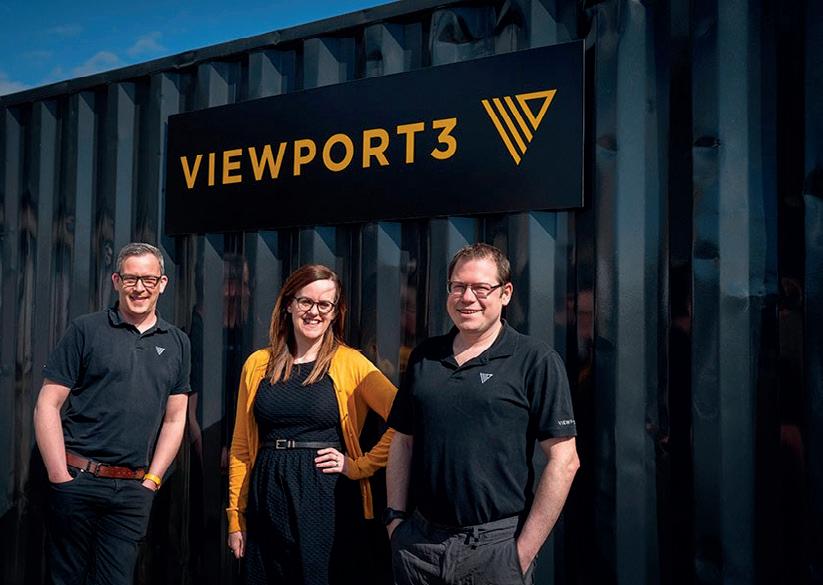
We also have contributions on this theme from Proserv and Intelligent Plant, Arnlea Systems, Viper Innovations, CAN Group, Worley, Fearnley Group, Intervention Rentals, Rig Control Products and our very own OGV Studio.

The rest of this month’s magazine as always provides you with a review of the Energy sector in the North Sea, Europe, Middle East, the US and Australasia along with industry analysis and project updates from Westwood Global Energy Group, the EIC and Renewables UK.
Daniel Hyland, Sales and Operations Director

CONTENTS FOLLOW US VIEW THE OGV MAGAZINE ONLINE AT www.ogv.energy/magazine @OGVENERGY OGVENERGY @OGVENERGY OGV-ENERGY COVER FEATURE OGV COMMUNITY NEWS GLOBAL ENERGY NEWS WORLD PROJECTS MAP DIGITAL TRANSFORMATION INNOVATION & TECH RENEWABLES CONTRACT AWARDS ON THE MOVE DECOMMISSIONING STATS & ANALYTICS LEGAL & FINANCE EVENTS P.04 P.08 P.10 P.20 P.22 P.46 P.48 P.50 P.52 P.54 P.56 P.58 P.59
4 8 22 24 29 46 26 10
3
Is it time for the digital twin to grow up?
In recent years, digital twins have been seen to be the answer to many of the energy industries challenges. In this article, we delve into the roots of this concept with Mike Stewart and Jared Owen from Sword, as they uncover why it is now the opportune moment for digital twins to unleash their full potential and evolve, if done the right way.

The Energy industry’s digitalisation continues to drive innovation and collaboration across domains and disciplines. This plays a vital role, helping companies maximise the value of their data, improving technical decision making whilst decreasing commercial and safety uncertainty. As our customers digitalise processes and generate increasing amounts of digital data across their assets, the challenge becomes one of unification –providing flexible access to federated data wherever it sits, in a robust model that can pivot to meet a diverse range of industry use cases.
A contextualised, liberated and pivotable Master Data Model (MDM) is a great realworld example of that principle: supporting engineering workflows with a trusted foundation, providing a leverageable data set for modern analysis techniques, and aiding regulatory compliance.
The success of a digital twin relies on its adoption across a business, evolving how it's maintained, upgraded, and decommissioned. Investment in the foundational building blocks, in the underlying data governance, is crucial to the long-term viability aligned to proper ownership and maintenance.

Our industry is and has always been driven by innovative engineering, we operate our entire infrastructure around it. In today’s world engineering needs to evolve to the next level but retain the fundamental principles and value it has unlocked
for us. We have moved from original drawings and diagrams to computer aided design (CAD) and 3D modelling and now to a digital twin representation of a physical asset. But what do we gain with this evolution? We still strive to design, build, and deliver complex engineering solutions and make decisions that are underpinned by data. Does technology make this better?
Today’s digital engineering allows us to make decisions on decades of design and learning made accessible through modern technology accessing relevant and liberated data.
Digital engineering, wait, what happened to the Twin?
The ability to visualise and analyse datadriven content is increasingly directed by the environment around us becoming ‘smart.’ This brings near limitless options when it comes to deciding how best we apply digital engineering to improve processes.
Sword defines digital engineering as ‘the ability to digitally replicate and manage an engineering environment through the use of digital applications and a single source of truth.’ Starting from those original drawings through to the latest 3D visualisation, engineers are looking to use increasingly advanced technologies to capture data, analyse, manipulate and then design and/or manage solutions in a digital engineering environment.
COVER FEATURE 4
www.ogv.energy I September 2023
The ability to visualise and analyse data-driven content is increasingly directed by the environment around us becoming ‘smart.’
To achieve the ambition of a digital representation of a physical asset such as a ‘digital twin’, we need the right building blocks in place to reference and represent how the asset or infrastructure was initially constructed and maintained, from the initial equipment lists to past and ongoing modifications. This means you need to be confident you have the right information for your entire data stack prior to asset digitalisation.
The heart of digital engineering
Sword focuses on the discovery and integration of all relevant data sources to first build a Master Data Model (MDM) as the single source of truth that can be accessed and interrogated by multiple users with differing needs. Our approach to building an MDM aligns with industry best practice to ensure an entire asset is captured and structured in a way they can be represented digitally.
Maturing from the teenage years
A key benefit of the MDM build is the flexible approach we have taken to client data models. Instead of requiring data to be fully exported and only consumed within our application databases like other industry solutions, we use a connected interface allowing clients to retain ownership of the master database while still benefitting from visualising that same data in our applications. This reassures customers who are becoming increasingly aware
of data governance and don’t want to be locked-in to a single software provider. In addition to the MDM, Sword have designed and delivered modular digital engineering applications accessed via our Sword Digital Engineering Platform that work with the MDM to maximise the interface and interaction of the asset data to facilitate and aid data-driven decisions. This empowers engineers to model, capture and manage information in a single accessible form, so they can use it to deliver projects, manage operations and drive industrial transformation.
Our Sword Digital Engineering suite of applications are configurable to multiple user groups, ensuring that the right users access the right tools to maximise production and minimise cost of use which differs to alternative tools that contain advanced functionality and features not required. This provides an element of cost agility other competitors in the market are unable to offer.

Our industry’s drive for innovation and collaboration in a changing environment is exciting. The benefits to a digital representation of both offshore and onshore infrastructure can unlock vast potential to make better decisions, maximise safety, increase efficiency and extend the life of the basin. The holy grail of a Digital Twin lies at our feet. It could however be just another half-hearted digital gimmick unless we focus on trusted and accessible data first, and then make the solution flexible and fit for purpose.
Jared has
Mike has been involved with Energy data and Information management for more than 17 years and now helps customers leverage Sword's full data capability across sectors and disciplines.



COVER FEATURE
20 years’ of experience in the indsutry. He works with customers in the design, development and support of bespoke engineering-led solutions and digital engineering applications.
Jared Owen Business Unit DirectorApplications
5
Mike Stewart Chief Technology OfficerData
STATS GROUP
Managing Pressure, Minimising Risk
Mechanical Pipe Connector
Piping Repair, Tie-In or Capping

seal vertification port



DNV TYPE APPROVAL















Permanent pipe to flange connection where welding may be undesirable. The slipover design and external gripping assembly enables a quick and cost-effective solution, with no specialist installation or testing equipment required.
 dual graphite seals
taper lock grips
dual graphite seals
taper lock grips




























































Header Disclaimer: The views and opinions published within editorials and advertisements in this OGV Energy Publication are not those of our editor or company. Whilst we have made every effort to ensure the legitimacy of the content, OGV Energy cannot accept any responsibility for errors and mistakes. OUR PARTNERS TRAVEL MANAGEMENT PARTNER LOGISTICS PARTNER Leading provider of logistics services to this industry, offering its customers airfreight, road freight, sea freight, project forwarding, customs compliance, training and consultancy, packing, crating, lashing & securing services warehousing, distribution, freight management, rig relocation and mobilisation services and offshore logistics. Corporate Travel Management (CTM) is a global leader in business travel management services. We drive savings, efficiency and safety to businesses and their travellers all around the world. Editorial newsdesk@ogvenergy.co.uk +44 (0) 1224 084 114 Advertising office@ogvenergy.co.uk +44 (0) 1224 084 114 Design Jen McAdam Ben Mckay Journalist Tsvetana Paraskova www.quanta-epc.co.uk YOUR ASSET IN SAFE HANDS Safe, efficient and low-cost delivery of Asset Management projects, ensuring best value every time. Operations Maintenance Repair orders Technical support VIEW our media pack at www.ogv.energy/advertise-with-us or scan the QR code ADVERTISE WITH OGV CONTRIBUTORS
Brimmond launch UK’s first turnkey aquaculture net cleaning tech amid Government drive to double sector’s value
FIND ALL THE FULL COMMUNITY NEWS ARTICLES ON OGV ENERGY'S WEBSITE




North-east 3D scanning firm awarded UK first approval for Remote Inspection Techniques
Aberdeen-based 3D scanning specialists, Viewport3, have become the first business in the UK to be approved for Remote Inspection Techniques (RIT) using underwater photogrammetry by Lloyd’s Register (LR).
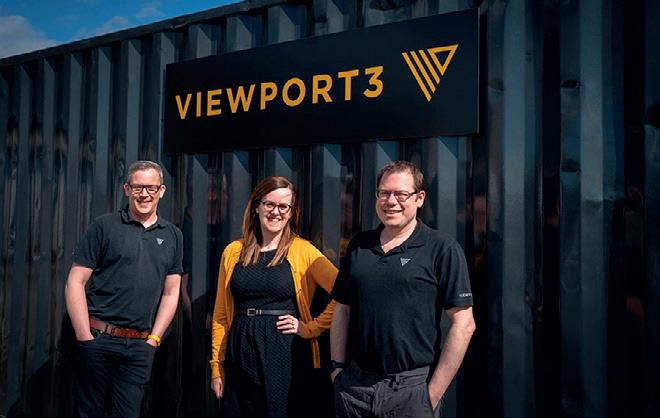

The certification was granted to Viewport3 following a successful offshore project along with an onshore validation trial, which involved using photogrammetry to verify mooring chain link critical dimensions to a sub-millimetric level – a level of accuracy and data density that far exceeds those attained by traditional approaches. As a result, the Viewport3 team have developed new reporting methods that better suit the high-resolution 3D replica of mooring links, that meet the requirements of both field operator and statutory inspection regulations.
North-east Scotland based engineering specialists, Brimmond, have launched their latest technology, NetJet™ which sees them become the first company in the UK to offer a full 360o manufacture, rental and support package for high-pressure net cleaning pumps for the offshore aquaculture sector.

Sureclean set for continued growth with four key new appointments
Brimmond, which specialises in the design, manufacture, rental and repair of lifting, mechanical and hydraulic equipment for industry, has invested c. £450K developing the high-end pump units, NetJet™ in house. The firm’s engineering team designed, specified and manufactured the pump units, following the identification of a gap in the flourishing aquaculture market for a rental option for net cleaning pumps.
Fish welfare is a priority for the aquaculture industry, and therefore nets are cleaned around every 5 days in the summer to preserve water quality and protect the fish. With over 200 offshore finfish sites in the UK, operating an estimated 2,200 nets, this is potentially an arduous and time-consuming task. While the technology exists to speed up the operation, the six-figure purchase price represents a considerable – and for many, unattainable - outlay.
New energy developments lead to record-breaking revenue for STRYDE
Newly relaunched industrial cleaning specialists, Sureclean, has announced a raft of key new appointments bringing in operation and project management along with health & safety expertise to the global energy industry.

Four new staff members have joined the company’s Operations division bolstering its service offering to play a central role in realising future growth ambitions. The recruitment drive comes just six months into the company’s relaunch following a management buy-out earlier this year.
Oldmeldrum-based Sureclean, previously NRC UK, was bought over from Americanbased US Ecology with new owners, Simon Gibb and Mark Kelly, rebranding the firm back to its original name, Sureclean.


STRYDE has delivered strong results across the first half of the year, seeing its strongestever revenues in both Q1 and Q2.

The business recorded a 100% increase in revenue compared with the same period in 2022, with new energy markets and new oil and gas exploration surveys stated as a key factor in its growth.
STRYDE, which has now been used in 42 countries around the globe, helps organisations to acquire an unparalleled understanding of the subsurface, faster, and more cost-effectively than ever before. As the creators of the world’s smallest seismic sensors, who also offer fast-track data processing services, STRYDE has enabled high-resolution seismic data to be accessible for any industry, including the fast-growing renewables sector.
www.ace-winches.com
www.thistletubulars.co.uk

www.ryscocorrosion.com


OGV COMMUNITY NEWS
www.revive-intra.com www.macartney.com reachsubsea.no www.ogv.energy/register LATEST OGV COMMUNITY SIGN-UPS JOIN THE OGV COMMUNITY FOR JUST £30 A MONTH 8










Connecting What’s Needed with What’s Next™ Copyright © 2023 Oceaneering International, Inc. All rights reserved. JOIN OUR TEAM SIGN-ON BONUS AVAILABLE* oceaneering.com/careers *available on specific roles only Cegal turns complex IT into digital success stories. that increases efficiency and control while reducing cost and emissions. with tech, energy, and business experts. of mission critical IT in hybrid cloud environments. Modern Industrial Software Super Skilled Agile IT Services Specialized Cloud Operations cegal.com Meet us at SPE Offshore Europe, 5-8 September 2023. OGV Energy Pavilion booth 2M60.
pledge
September 2023
UK NORTH SEA Oil & Gas Review
 By Tsvetana Paraskova
By Tsvetana Paraskova
Hundreds of new oil and gas licences will be granted in the UK, Prime Minister Rishi Sunak confirmed on 31 July, as the UK Government continues to back the North Sea oil and gas industry as part of the drive to make Britain more energy independent.
The Government and the North Sea Transition Authority (NSTA) announced their joint commitment to undertake future licensing rounds, which will continue to be subject to a climate compatibility test. By adopting a more flexible application process, licences could also be offered in close proximity to currently licensed areas. This is expected to unlock oil and gas reserves which can be brought online faster due to existing infrastructure and previous relevant assessments.
With the commitment to award hundreds of new oil and gas licences, the UK Government is taking steps to slow the rapid decline in domestic production of oil and gas, which will secure Britain’s domestic energy supply and reduce reliance on hostile states.
The NSTA expects the first of the new licences in the 33rd offshore oil and gas licensing round to be awarded in the autumn, with the round expected to award over 100 licences in total.



“Future licences will be critical to providing energy security options, unlocking carbon capture usage and storage and hydrogen opportunities
– building truly integrated offshore energy hubs that make the best use of the established infrastructure,” the Government said.
“Even when we’ve reached net zero in 2050, a quarter of our energy needs will come from oil and gas. But there are those who would rather that it come from hostile states than from the supplies we have here at home,” Prime Minister Sunak said.
“We’re choosing to power up Britain from Britain and invest in crucial industries such as carbon capture and storage, rather than depend on more carbon intensive gas imports from overseas – which will support thousands of skilled jobs, unlock further opportunities for green technologies and grow the economy.”

Offshore Energies UK, the leading trade association for energy firms, welcomed the government’s commitment to the 33rd licencing round and its carbon capture announcements as important steps forward for long-term energy security and jobs.
“Domestic production is the best pathway to net zero and the UK Government’s commitment to licences is a welcome boost for energy security and jobs,” OEUK chief executive David Whitehouse said.
“Oil and gas fields decline naturally over time. The UK needs the churn of new licences to manage production decline in-line with the maturing basin,” Whitehouse added. Currently, the UK North Sea hosts 283 active oil and gas fields, but by 2030 around 180 of those will have ceased production due to natural decline, OEUK noted.
“If we do not replace maturing oil and gas fields with new ones, the rate of production will decline much faster than we can replace them with low carbon alternatives,” Whitehouse said.
Separately, OEUK launched on 8 August a major survey aimed at improving how companies conduct business to assess how the industry is treating its supply chain. The survey is open until 29 September.
“The Working as One survey will measure how companies are adhering to the Supply Chain Principles, a set of 10 commercial behaviours developed by the industry to promote continuous improvement. It seeks feedback on key areas including timely payment of suppliers and clarity regarding contractual terms and conditions,” Katy Heidenreich, OEUK’s Supply Chain and People Director said.
“The health of the supply chain is dependent on sustainable contracting practices and a cooperative mindset, but our research reveals many businesses face pressures
The government’s
to award new North Sea oil and gas licences, the cost of decommissioning, and updates on various projects and drilling contracts featured in the UK North Sea oil and gas industry over the past month.
UK NORTH SEA REVIEW SPONSORED BY
www.ogv.energy I September 2023 10
on several fronts including negative commercial behaviours,” Heidenreich added.
The North Sea oil and gas industry spent £1.6 billion decommissioning redundant wells and infrastructure in 2022, more than in any of the previous five years, the NSTA said in its annual UKCS Decommissioning Cost and Performance Report 2023.

The report found that the UK offers a significant opportunity ahead for the decommissioning sector, with £21 billion of spending on decommissioning expected for the next decade alone. The industry, however, needs to maintain its focus on performance, collaborate effectively, and urgently commit to decommissioning plans to achieve further cost-efficiencies amid challenging market conditions, NSTA noted.
The decommissioning sector has developed an impressive track record of decommissioning wells and infrastructure to a high standard while keeping costs competitive, marking it out as a world leader in decommissioning, according to the report.

Between 2017 and 2022, industry spent around £8 billion on decommissioning projects, helping it establish a solid foundation of decommissioning expertise. Continuous improvement has been embedded into the planning and execution of projects, contributing to a reduction in the overall cost estimate of UKCS decommissioning by £15 billion, or 25 percent, in the same period.
An encouraging sign is that UK suppliers are in line to secure around 70 percent of the work associated with UK North Sea decommissioning projects listed in Supply Chain Action Plans (SCAPs) lodged with the NSTA last year.
“Achieving further improvements will be challenging, however, in the face of factors including heightened demand for equipment, vessels and services from other regions and sectors, such as offshore wind – which have pushed up prices, taking the total cost estimate for decommissioning to £40 billion,” NSTA said.
Sam Long, Decom Mission Chief Executive, said: “Decommissioning is but one of many market opportunities that members face, with the continuing advancement of the energy transition and the international need for decommissioning services.”
Another NSTA analysis showed that North Sea gas is almost four times cleaner than LNG imports.
The UK gas carbon intensity is 21 kg CO2/boe and compares with LNG import average carbon intensity 79 kg CO2/boe. Norway has the lowest carbon intensity of all LNG imports at 33 kg CO2/boe, and Peru the highest at 90, with the average coming to 79, while UK gas has a carbon intensity of only 21 kg CO2/boe. The difference is due to both the way the gas is transferred and, in some cases, the methods of extraction, the NSTA analysis showed. The primary causes for the stark difference in emissions are the process of liquefaction – turning the gas into liquid for transport - then transportation via shipping, and finally regasification, turning the liquid back into gas so it can be used.
The NSTA report showed that around 63 percent of UK gas supply was imported into the country in 2022, 187 mmboe via pipeline and 156 mmboe from LNG. The UK produced 38 percent of its gas supply last year, yet that 38 percent was responsible for only 24 percent of total emissions associated with gas supply, whereas LNG from the United States was responsible for 35 percent of the emissions, despite accounting for only 14 percent of the supply.
In company news, bp and OMV announced the signing of a long-term sale and purchase agreement covering supply of up to 1 million tonnes of liquefied natural gas (LNG) per year for 10 years from 2026. bp will provide OMV with LNG from its global portfolio of LNG, which will be received and re-gasified through the Gate LNG terminal in Rotterdam, The Netherlands, where OMV holds regasification capacity, or other terminals in Europe.
“At bp, we see LNG as an essential part of the energy transition and essential for our own pivot to becoming an integrated energy company,” said Jonty Shepard, VP global LNG trading & origination, bp.
Shelf Drilling has secured a contract for the Shelf Drilling Fortress jack-up rig with CNOOC Petroleum Europe Limited for operations at the Golden Eagle platform in the UK Central North Sea. The firm term of the contract is two wells, approximating to between four and five months. The contract value for the firm period is around $17 million. The contract also includes options for additional wells with a total estimated duration of 13 months. The planned start-up of operations is September 2023.
United Oil & Gas and Quattro Energy Limited have agreed to extend the long stop date in their agreement for the sale of the UK Central North Sea Licence P2519 containing the Maria discovery to 30 September 2023. It was also agreed that a further extension may be required for all conditions precedent to be met to allow completion of the sale, namely regulatory approvals to enable the transfer of funds to United, and the Licence assignment to Quattro.
Hibiscus Petroleum announced that it had received a Development and Production Works Consent to a Field Development Plan (FDP) for the Teal West field from the North Sea Transition Authority on 1 August 2023. The FDP approval comes pursuant to the unconditional grant of consent for the Environmental Statement received on 7 July 2023. The next stage after the FDP approval is the internal Final Investment Decision (FID), which if proceeded with, would result in first oil from the Teal West field expected by late 2024/early 2025.
Repsol Sinopec Resources UK Limited awarded in mid-August a $165 million decommissioning contract to Archer to execute the plug and abandonment (P&A) of 30 wells in the Fulmar Field and two wells in the Halley Field. The contract is a fully integrated P&A project, covering the complete work scope, including a modular P&A rig, well services, and well engineering.
The Fulmar scope includes removal of the existing drilling facility and installation of one of our P&A rigs. In addition, Archer will deploy its P&A well services offering to reduce time and cost to plug each well. The contract will commence immediately, and Archer expects integrated offshore P&A operations to start in the second half of 2024 or early 2025.
Repair, Conversion & New Build of Marine and Offshore Living Quarters & Technical Buildings Aberdeen | Blyth | Las Palmas | Dubai | Abu Dhabi | Qatar | Bahrain | KSA | Baku Proud Sponsor of the UK North Sea Review modutec.com
Europe Energy Review
By Tsvetana Paraskova
Oil & Gas
Natural gas in the EU’s storage sites hit the 90-percent full target in the middle of August, well in advance of the EU deadline set for 1 November, thanks to milder 2022/2023 winter and increased LNG imports.

OKEA ASA and DNO ASA, the partners in the Brasse licence in the northern North Sea offshore Norway, have agreed on a fasttrack development concept for the oil and gas discovery, paving the way for detailed design studies to link up with the Brage field. A final investment decision is expected in early 2024. Brasse is an oil and gas discovery 13 kilometres south of the Brage field and 13 kilometres southeast of the Oseberg Field Center.
Equinor said in early August that the Norwegian government had approved the Snøhvit partners’ plans for the future operation of Snøhvit and Hammerfest LNG via electrification, subject to certain conditions. Compared to the Snøhvit partnership’s application, the authorities have postponed the start of electrification by two years, from 2028 to 2030. The plant will continue to run on gas turbines during this period.
The electrification of Hammerfest LNG will replace today’s gas turbines with electricity from the grid. This would cut CO2 emissions from the plant by around 850,000 tonnes
annually—the most substantial individual emission reduction decision that has been made aimed at decarbonising oil and gas production in Norway, Equinor says.
Low Carbon Energy
A research study led by the University of Aberdeen has identified areas of a North Sea gas 'super basin' with the greatest potential for storing industrial carbon emissions. Described as ‘world-class research’ by the UK Regulator, the North Sea Transition Authority (NSTA), scientists from the University’s Centre for Energy Transition used subsurface data and techniques usually employed in oil and gas exploration, to produce a detailed technical study of the Anglo-Polish Super Basin in the Southern North Sea to determine its suitability for carbon capture, utilisation and storage (CCUS).
The results of the study confirmed the huge potential of the area as a future CCUS hub where industrial emissions can be safely stored in former gas fields and other geological formations.
“By establishing a consistent regional geological framework, this work will assist the evaluation of storage sites within the Southern North Sea, allowing the optimisation of their exploitation and supporting assessments of risk and uncertainty,” said Dr Nick Richardson, Head of Exploration & New Ventures at


GLOBAL ENERGY REVIEW
www.ogv.energy I September 2023 12
European gas storage sites hit the target to be 90 percent full months in advance compared to the EU deadline of 1 November, oil and gas projects offshore Norway reached important regulatory milestones, while the UK and Europe advanced and assessed the potential of various renewable energy sources.
the UK’s regulator for Carbon Storage activities, the North Sea Transition Authority, commenting on the study.
“It will also aid regulatory and marine planning bodies in their ongoing efforts to identify synergies between offshore activities, and maximise opportunities for innovation and collaboration on the pathway to net zero.”
Europe is storing huge amounts of solar panels made in China as the rate of imports exceeds installations, Rystad Energy said in a report at the end of July.
Around 40 gigawatts-direct current (GWdc) of capacity of China-made panels are currently in storage across Europe– the same amount installed across the continent in 2022, the independent energy research and business intelligence company said.
These solar panels in storage are worth about €7 billion and could generate enough electricity to power 20 million homes per year. The build-up is only set to grow this year, with Rystad Energy forecasting 100 GWdc of solar capacity in storage by the end of 2023.
Currently, China-made panels often cost as little as two-thirds of European-manufactured panels.
“European countries are desperate to get their hands on affordable solar infrastructure to advance their renewable energy targets, decarbonize and avoid paying elevated prices for new capacity,” said Marius Mordal Bakke, senior supply chain analyst at Rystad Energy.
“Although efforts are underway to build a reliable solar supply chain in Europe, the need for panels now means leaders cannot wait until 2025 or later to buy European.”
A new £10 million government fund will support rural and local communities across England to develop local renewable energy projects, the UK government said in August. The funding, dubbed Community Energy Fund, is aimed at helping communities launch projects such as small-scale wind farms and rooftop solar partnerships, battery storage, rural heat networks, electric vehicle charging points, and fuel poverty alleviation schemes - all proposed, designed, and owned by local people.
Crown Estate Scotland is launching an indepth survey of developers working in the tidal and wave energy sectors to help inform Crown Estate Scotland’s plans to support future leasing. The study will be carried out by Offshore Renewable Energy (ORE) Catapult on behalf of Crown Estate Scotland.
Norway extended the deadline for applications in its offshore wind tender by two months to 1 November from 1 September in order to finalise the support the state would offer to the winning projects. The Norwegian Ministry of Petroleum and Energy targets the projects up for grabs in the Southern North Sea II and Utsira Nord areas to begin operations by 2030.

New areas for offshore wind are expected to be announced in 2025, Petroleum and Energy Minister Terje Aasland said.
In company news, bp – via bp ventures –led a $12.5-million Series A financing for Advanced Ionics, a developer of a new category of hydrogen electrolyzers useful for expanding green hydrogen production. Additional investors including Clean Energy Ventures, Mitsubishi Heavy Industries, and GVP Climate.
“Advanced Ionics’ technology has the potential to drive down cost and disrupt the hydrogen market,” Gareth Burns, vice president of bp ventures, said.
bp has also recently invested £4 million in UKbased fleet optimization software provider Dynamon and announced a commercial agreement.
bp ventures’ Burns commented:
“Faster adoption of lower carbon energy and mobility solutions will help drive bp towards meeting its ambition to become a net zero company by 2050 or sooner and helping the world get to net zero.”
Carbon Catalyst and Perenco UK announced in mid-August they were awarded a carbon storage licence by the NSTA to progress the Poseidon carbon storage project in the Southern North Sea sector of the UK Continental Shelf.
Poseidon envisions the permanent geological storage of around one billion tonnes of CO2 into the UK's largest depleted gas field, the Perenco UK-operated Leman gas field, and other adjacent storage reservoirs within the carbon storage licence. The project is scheduled to be operational by 2029, with initial CO2 injection rates of 1.5 million tonnes per annum (Mtpa), increasing to 40 Mtpa over a 40-year period.
Stanlow Terminals Ltd, the UK’s largest independent bulk liquid storage provider, has signed a Memorandum of Understanding (MoU) with Eni’s UK subsidiary to explore the development of CO2 collection, shipping, and storage at the Stanlow Terminal location and then delivering the received CO2 into Eni UK’s carbon transport and storage infrastructures currently being developed in the northwest of the UK.
Rovco has won a survey contract by Flotation Energy to carry out a geo-environmental survey at its planned Cenos floating offshore windfarm, 200 kilometres off the north-east coast of Scotland. Located in the Central North Sea, the 1.4 GW Cenos floating wind development will cover approximately 333 square kilometres. Rovco’s scope of work involves the acquisition of geophysical and benthic information to provide detailed data to inform environmental impact assessment (EIA) consents and the engineering processes from engineering to early front-end engineering and design (FEED) study.
The GB electricity regulator Ofgem has provisionally approved SSEN Transmission’s proposals to upgrade the electricity transmission network in Argyll and Kintyre. The upgrade project will secure future electricity supplies in the area and enable the connection of new renewable electricity generation in the region. It will support the connection of at least 970 MW of new renewable electricity generation, enough to power more than 500,000 homes.
UK-based renewable energy and battery storage developer Luminous Energy has achieved financial close on the 28.5 MWp Bracon Ash Solar Farm, near Norwich, Norfolk. The project is expected to achieve first power in the summer of 2024 and generate enough electricity to power more than 9,500 households annually.

German energy giant RWE has been granted by the German Federal Network Agency awards in the Nordseecluster B area in the latest German offshore wind tender in August. The award involves the N-3.6 and N-3.5 sites in the German North Sea, on which RWE intends to develop, build, and operate two wind farms with a total capacity of 900 MW. The company was also awarded a further offshore site with 630 MW, subject to exercise of third-party step-in rights by another company.
RWE also said in August it had invested €9 billion in the first six months of 2023, while its capacity increased by 5.1 GW through acquisitions and the commissioning of new plants.
“We are currently constructing more than 70 renewable energy projects in 12 countries with a total capacity of over 7 gigawatts – that’s more than ever before,” RWE chief executive Markus Krebber said.
EUROPE EUROPE NEWS SPONSORED BY
13
Energy Review
By Tsvetana Paraskova
US crude oil production is expected to rise more than previously expected in 2023 and 2024 as many companies raised their output guidance after reporting second-quarter results. Deals in the US upstream sector boomed in the second quarter as the top oil-producing basin, the Permian, returned to the centre of the mergers and acquisitions (M&A) activity. In addition, energy trade groups called on the Biden Administration to finalise a robust programme for federal offshore leasing.

US Oil Production Set To Rise More than Previously Thought
US crude oil production is set to increase this year more than previously estimated, the US Energy Information Administration (EIA) said in its Short-Term Energy Outlook (STEO) for August.
The EIA now expects U.S. crude oil production will average 12.8 million barrels per day (bpd) in 2023 and 13.1 million bpd in 2024, both annual records, as a result of higher expected well-level productivity and higher crude oil prices. These forecasts were raised by 200,000 bpd for 2023 and by 300,000 bpd for 2024 compared to the projections in the July report.
Announcing second-quarter results, some US companies reported record crude oil
production in the Permian basin and others raised their full-year 2023 guidance for oil output. Supermajors ExxonMobil and Chevron both reported record oil production from the Permian, while ConocoPhillips, Pioneer Natural Resources, and Occidental all raised their full-year production guidance, citing continued strong well productivity and highly efficient operations.
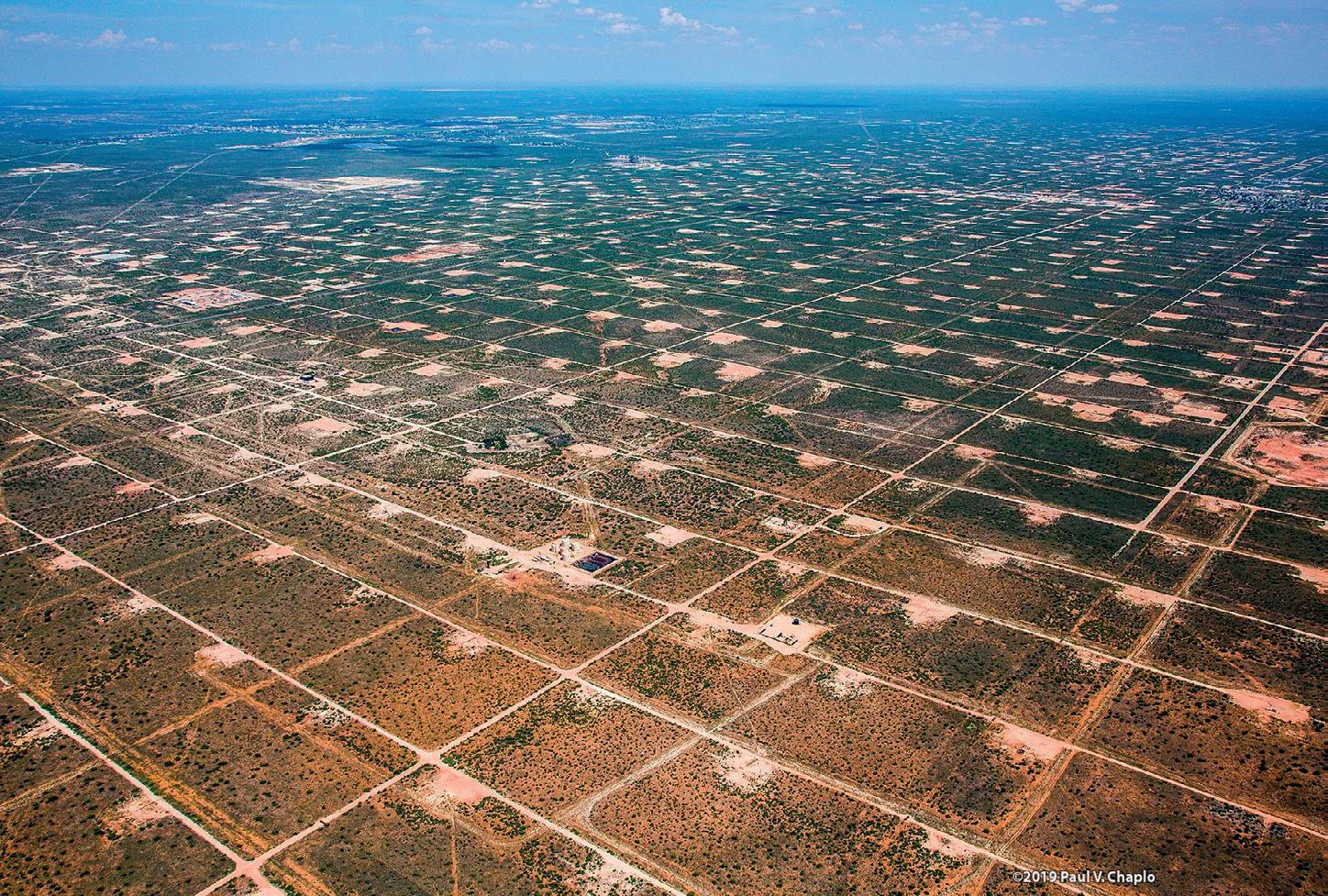
However, a new report by Enverus Intelligence Research (EIR) showed in the middle of August that oil decline profiles have steepened across US shale oil plays over the last decade. Despite the fact that recoveries from the average US shale oil well have doubled in the past decade, production profiles for the average well have steepened more than half of a percentage point annually since 2010, Enverus noted. Another key finding is that the
average oil production profile in the Permian’s Midland Basin has steepened by 0.5 of a percentage point each year since 2014. The Delaware Basin has steepened by even more since that time.
EIR sees Permian-type curve shapes to continue to steepen over time as the basin gets more densely developed. As a result of steeper declines, average breakeven prices for profitable drilling will rise.
“We’ve observed that declines curves, meaning the rate at which production falls over time, are getting steeper as well density increases. Summed up, the industry’s treadmill is speeding up and this will make production growth more difficult than it was in the past,” said Dane Gregoris, report author and managing director at EIR.

digitisingreality.com

GLOBAL ENERGY REVIEW
From flare tip to the jacket, Digitising Reality can create a digital twin of your offshore asset so you can efficiently manage your resources effectively.
Assets Digitised. Savings Realised.
SPONSORED BY www.ogv.energy I September 2023 14
Upstream M&A Activity Booms
Another report by Enverus Intelligence Research showed that the Permian led the mergers and acquisitions (M&A) activity in the US upstream sector in the second quarter. A total of $24 billion was transacted in 20 deals with the Permian returning to its usual position as the centre of M&A activity, EIR said.
“The second quarter saw a thunderous return to Permian M&A after a relatively quiet start to the year,” said Andrew Dittmar, director at Enverus.

“The need for public buyers to secure quality drilling inventory has been brewing, and the pressure to make a deal has been mounting as the remaining opportunities are narrowed with each successive transaction. That in turn is driving higher valuations on the remaining assets.”

There are a handful of private Permian assets still available for the rest of this year, and a number of these assets are likely to find buyers before the year ends, EIR reckons.
Energy Groups Urge Biden To Finalise Offshore Leasing Programme
The American Petroleum Institute (API), the main oil lobby in the US, joined in early August 17 other energy trade groups representing all sectors of the US natural gas and oil industry in calling on the Biden Administration to support US energy security by finalizing a robust program for federal offshore leasing. The energy trade groups sent a letter to US President Joe Biden, in which they urged the Administration to finalise a programme that includes the maximum number of lease sales and begin the pre-leasing work required to start holding sales in 2024.
The letter follows a recent Stipulated Stay agreement that imposed baseless restrictions on an estimated 11 million acres in the US Gulf of Mexico, leaving the offshore energy industry in an extended period of uncertainty, API said.
“U.S. offshore oil and natural gas production is fast approaching yet another period of extended uncertainty that could negatively impact American energy security. Though the administration has committed to issuing a new five-year offshore leasing program by the end of September, it already is a year and a half late because the previous program expired in June 2022,” the letter reads.
“Time is running out to avoid significant consequences that could result from a prolonged gap in federal offshore leasing and production in the years ahead.”
A recent comprehensive study on global oil production and emissions by ICF found that oil and gas production in the US Gulf of Mexico has a carbon intensity 46 percent lower than production in other parts of the world, the energy groups said in the letter.
Moreover, the US offshore industry plays a significant role in the regional, state, and local economies of the Gulf Coast and provides nearly 15 percent of domestic oil and natural gas production, they added.
API also joined grid operators, electric utilities, and regulatory authorities in expressing concerns about challenges to meeting the tight timeline for compliance in the US Environmental Protection Agency’s (EPA) proposed regulation of greenhouse gas emissions from US power plants.
Earlier this year, EPA proposed to establish emission guidelines for large, frequently used existing fossil fuel-fired stationary combustion turbines, generally natural gasfired, as well as to strengthen the current New Source Performance Standards (NSPS) for newly built fossil fuel-fired stationary combustion turbines.
“While carbon capture (CCS) and hydrogen are promising technologies to help reduce GHG emissions, operators will need time to develop and build significant amounts of new infrastructure to support the deployment of these technologies, a task that is increasingly difficult with our nation’s complex and outdated permitting process,” API said, commenting on its input on the proposed rules.
“We urge EPA to comprehensively analyze the potential reliability risks of its proposal, recognizing it coincides with rising U.S. electricity demand. Today natural gas is responsible for 40% of electricity generation in America, helping meet growing demand and balancing variable renewable resources,” API Senior Vice President of Policy, Economics and Regulatory Affairs, Dustin Meyer, said.
Texas Set New Oil & Gas Production Records in June
Texas set new production records in June, exceeding previous all-time highs, according to the August monthly energy economics analysis prepared by Texas Oil & Gas Association (TXOGA) Chief Economist Dean Foreman, Ph.D.

Texas’ oil production reached a record high 5.5 million bpd in June and July, while the state’s natural gas marketed production reached 31.4 billion cubic feet per day (bcf/d) in June before decreasing to 31.2 bcf/d in July, TXOGA estimates showed.
Year-to-date through July 2023, Texas’ shares rose to 43.3 percent of oil production in the US and 27.4 percent of natural gas marketed production. These numbers also represent the highest level of oil production for any month on record in Texas since 1981, and the highest level of natural gas liquids on record for any month since 1993, the analysis found. “Policies and politics in Texas and across our nation will determine if we can be the trusted ally the world turns to, or if nations will have to look elsewhere for leadership on energy security,” TXOGA President Todd Staples said, commenting on the analysis.
“To that end, we need bold policy at the state and federal levels to keep Texas the global energy leader.”

USA US NEWS SPONSORED BY
“The second quarter saw a thunderous return to Permian M&A after a relatively quiet start to the year,”
“Policies and politics in Texas and across our nation will determine if we can be the trusted ally the world turns to, or if nations will have to look elsewhere for leadership on energy security,”
Andrew Dittmar, director at Enverus.
TXOGA President Todd Staples
15
MIDDLE EAST Energy Review
By Tsvetana Paraskova
Oil production from the OPEC+ group and the Middle East slumped in July as Saudi Arabia began its unilateral output cut, while Saudi Aramco reported lower earnings as oil prices slid in the second quarter and the United Arab Emirates’ state oil and gas firm ADNOC signed several new deals to expand its gas business abroad and tap into geothermal energy and carbon management.
Crude oil production from all 13 OPEC members plummeted by 836,000 barrels per day (bpd) to 27.31 million bpd in July, led by a 968,000 bpd decline in Saudi Arabia’s output as the Kingdom nearly delivered its promised 1-million-bpd cut, OPEC’s Monthly Oil Market Report (MOMR) showed in August

Saudi Arabia, the biggest oil producer in OPEC and the Middle East, reduced its crude oil production by 968,000 bpd from June to an average of 9.021 million bpd in July, according to OPEC’s secondary sources in the monthly report. Crude oil production from Saudi Arabia has now fallen below the oil output of Russia, the key partner of OPEC in the OPEC+ alliance.
The other large output declines in OPEC in July came from Libya and Nigeria, two members that have been constantly plagued by field blockades and infrastructure leaks, respectively. Middle Eastern producers Iraq and Iran, as well as Angola and Venezuela, increased their respective output, according to the secondary sources in OPEC’s report. Iran, Libya, and Venezuela, however, are exempted from the OPEC+ production cuts, due to sanctions on Iran and Venezuela and port and field blockades in Libya.
Oil production from OPEC and the Middle East as a whole is set to be low in September, too, after Saudi Arabia said in early August it would extend its unilateral cut of 1 million bpd into September, adding that the reduction could be further extended or even extended
Smart Procurement
At Craig International, procurement isn’t just about processes, products and numbers. We promote a culture of ownership among our people, who are trusted to get on with the job on your behalf. We’re proud of how we serve clients.

www.craig-international.com


We’re always looking for new ways to add value and routinely introduce new technological solutions to make service delivery even simpler, smoother, faster.
and deepened. Saudi oil production for the month of September 2023 will be around 9 million bpd, as it was in July and August.
“This cut is in addition to the voluntary cut previously announced by the Kingdom in April 2023, which extends until the end of December 2024,” the Saudi Press Agency reported.
“This additional voluntary cut comes to reinforce the precautionary efforts made by OPEC Plus countries with the aim of supporting the stability and balance of oil markets,” it added.
OPEC Leaves Oil Demand Growth Estimate Unchanged
In the same report, OPEC left its global oil demand outlook unchanged from the previous month, expecting demand to grow by 2.4 million bpd to average 102.0 million bpd in 2023. Most of the growth is expected to come from the developing economies, thanks to a steady increase in transportation and industrial fuel demand, supported by a recovery in activity in China and other nonOECD regions, OPEC said.
Next year, solid global economic growth amid continued improvements in China is expected to boost oil demand, which is set to rise by 2.2 million bpd compared to 2023, with world oil demand projected to average 104.3 million bpd. China and India will lead demand growth in 2024, OPEC noted.
GLOBAL ENERGY REVIEW
SPONSORED BY
16 www.ogv.energy I September 2023
Image courtesy of: www.adnoc.ae
“Other regions, particularly the Middle East and Other Asia, are also expected to see considerable gains, supported by a positive economic outlook. In terms of fuels, jet kerosene, gasoline and diesel are assumed to lead oil demand growth next year,” the cartel said.
Saudi Aramco Profit Tumbles, Dividends Grow
Saudi Aramco, the state oil giant and the largest oil firm in the world by both production and market capitalisation, reported in early August a net income of $30.1 billion for the second quarter of 2023, a decline of 38 percent compared to the $48.4 billion net profit for the same period of 2022. In the spring of last year, oil prices hit $100 per barrel after the Russian invasion of Ukraine, while Brent prices averaged below $80 per barrel, $78 a barrel to be precise, in the second quarter of this year.
Saudi Aramco’s average realised crude oil price was $78.80 per barrel in the second quarter of 2023, down from $113.20 a barrel for the same period last year.
But the company raised its dividend payout as it plans to distribute performancelinked dividends over six quarters beginning in the third quarter of 2023. Aramco plans to calculate the first performance-linked dividends based on the combined full-year results of 2022 and 2023. Aramco expects these performance-linked dividends to be calculated based on 70 percent of the Group’s combined full-year free cash flow for 2022 and 2023, net of the base dividend and other amounts including external investments.
“At Aramco, our mid to long-term view remains unchanged. With a recovery anticipated in the broader global economy, along with increased activity in the aviation sector, ongoing investments in energy projects will be necessary to safeguard energy security,” president and CEO Amin Nasser said.
“We are maintaining the largest capital spending program in our history, with the aim of increasing our oil and gas production capacity and expanding our Downstream business — with petrochemicals projects, such as our $11.0 billion expansion of the SATORP refinery with TotalEnergies, essential to meet future demand.”
UAE’s ADNOC Signs Deals, Brings Forward Net-Zero Target To 2045
ADNOC, the state energy firm producing most of the oil and gas in the United Arab Emirates, brought forward its net-zero target five years earlier than planned and signed several deals to expand in natural gas, carbon management, and hydrogen.
At the end of July, ADNOC said that Sheikh Khaled bin Mohamed bin Zayed Al Nahyan, Crown Prince of Abu Dhabi and Chairman of the Abu Dhabi Executive Council, approved the company’s accelerated decarbonisation
plan to bring forward its net zero ambition to 2045, from its previous target of 2050, and to achieve zero methane emissions by 2030. ADNOC is the first company in its peer group to accelerate its net zero target to 2045.
ADNOC also reported emissions intensity for 2022, saying that its upstream carbon intensity last year was around 7 kg of carbon dioxide equivalent (CO2e) per barrel of equivalent, one of the world’s lowest. ADNOC’s methane intensity was around 0.07 percent, the oil giant said.
ADNOC has also announced that it had started construction on the Middle East’s first high-speed hydrogen refuelling station. The station, which is being built in Masdar City by ADNOC, will create clean hydrogen from water, using an electrolyser powered by clean grid electricity.
“Hydrogen will be a critical fuel for the energy transition, helping to decarbonize economies at scale, and it is a natural extension of our core business,” said Sultan Ahmed Al Jaber, Minister of Industry and Advanced Technology and ADNOC Managing Director and Group CEO.

“Through this pilot program, we will gather important data on how hydrogen transportation technology performs as we continue to develop the UAE’s hydrogen infrastructure.”
ADNOC and US energy firm Occidental have signed a strategic collaboration agreement to evaluate potential investment opportunities in carbon dioxide (CO2) capture and storage (CCS) hubs in the United Arab Emirates (UAE) and United States with a view to develop a carbon management platform to accelerate the net-zero goals of both companies.
As part of the agreement, ADNOC and Occidental are evaluating the development of direct air capture (DAC) facilities in the UAE, including what could be the first megaton DAC project constructed outside of the US. The companies will also assess the joint development of one or more carbon management hubs in the UAE. The hubs would be able to offer carbon capture services and provide the necessary infrastructure to safely transport CO2 from the UAE’s carbonintensive and hard-to-abate sectors and
permanently store it in Abu Dhabi’s geological formations.

ADNOC and the National Central Cooling Company PJSC (Tabreed) announced in midAugust a breakthrough in the first project in the Gulf region to harness geothermal energy following the conclusion of testing on two geothermal wells at Masdar City in Abu Dhabi. The hot water generated by the heat from the wells will now pass through an absorption cooling system to produce chilled water, which will then be supplied to Tabreed’s district cooling network at Masdar City, accounting for 10 percent of its cooling needs.
ADNOC has also signed a deal to buy 30 percent in the Absheron gas field in the Caspian Sea in Azerbaijan by acquiring 15-percent stakes from each of the current partners, TotalEnergies and SOCAR.
“With global gas demand expected to steadily increase over the coming decades, ADNOC will continue to responsibly meet the world’s energy needs by developing and producing natural gas from world-class assets such as Absheron,” said Musabbeh Al Kaabi, Executive Director, Low Carbon Solutions and International Growth at ADNOC.
QatarEnergy’s projects are expected to provide around 40 percent of all new global LNG supplies by 2029, according to Saad Sherida Al-Kaabi, Qatar’s Minister of State for Energy Affairs and the President and CEO of QatarEnergy.
“By 2029, about 40% of all new global LNG supplies will be provided by QatarEnergy projects,” Al-Kaabi said at the 12th LNG Producer-Consumer Conference in Tokyo in July.

“These projects will achieve significant reductions in greenhouse gas emissions through carbon capture and sequestration as well as the use of solar energy. In all, we aim to reduce the overall carbon intensity by about 30% compared to previous generation designs,” Al-Kaabi added.
A huge contract for Qatar’s North Field South (NFS) LNG project led to a 60-percent jump in the overall disclosed contract value in the oil and gas industry in the second quarter of 2023, data and analytics company GlobalData said in a report in early August.
The overall contract value jumped from $35.4 billion in the first quarter of 2023 to $56.7 billion in the second quarter.
“The big boost on the value front is attributed to Technip Energies and Consolidated Contractors Company (CCC) joint venture’s landmark $10 billion engineering, procurement, construction and commissioning (EPCC) contract to build 16 million tonnes per year
North Field South (NFS) LNG project in Qatar,” said Pritam Kad, Oil and Gas Analyst at GlobalData.
MIDDLE EAST MIDDLE EAST NEWS SPONSORED BY
Sultan Ahmed Al Jaber, Minister of Industry and Advanced Technology and ADNOC Managing Director and Group CEO.
17
“Hydrogen will be a critical fuel for the energy transition, helping to decarbonize economies at scale, and it is a natural extension of our core business,”
Heila HLM20-3S: 1,700kg @ 10.5m
Effer 440M-5S: 2,150kg @ 14.5m
Effer 440M-8S: 955kg @ 21.5m
Effer 120000-3S: 6,850kg @ 15m
Heila HLRM170-4S 10,000kg @ 14m
Effer 175000-6S: 5,350kg @ 21.5m
Effer 175000-6SL: 2,250kg @ 27.3m
Modular Options Available
Come and see us at Offshore Europe on stand IR39
Qualified STAGE 2 Crane Operators

Support Technicians
Onshore Test Facility
T Kintore, Aberdeenshire, Scotland, AB51 0QP
+44 (0)1467 633805
ma r in e c r aneS
www.brimmond.com
info@brimmond.com rental
BRENT OIL PRICES OVER THE YEARS
THE DIGITAL MEDIA STRATEGIST

FROM EFORT TO IMPACT, TRANSFORMING YOUR DIGITAL MEDIA FOR COMMERCIAL GROWTH...

1 Year Ago - $93.45
At the beginning of September OPEC agreed to cut supply to prop up oil prices. This decision went against calls from Western governments who were battling to curb inflation in the face of a mounting global energy crisis. The decision would see 100,000 barrels a day cut - starting from October


 By Eric Doyle
By Eric Doyle
There was a time when digital transformation meant using digital technology to enhance our internal processes. You might remember a time when your company said “we are implementing a new ERP system” or perhaps a digital accounting system or a CRM. All technology to allow us to save time and become more organised and efficient.
As the digital wind really started to blow, it encompassed more and more of what we do as professionals and it crept into our external facing, commercial worlds.
The answers to those 3 questions:
• It should be you and your team and you should be able to speak with confidence and hard evidence as to why.
5 Years Ago - $78.22
Experts warned that the global economy could be damaged if oil prices returned to the $100 mark by the end of 2018. Market watchers predicted that prices could reach somewhere between the $90 and $100 mark by year’s end after OPEC rejected Donald Trump’s demands to expand production.
Marketing, Sales and Business development all now picking up pace in the digital version of your commercial world - your commercial digital twin.
In this digital twin, the language and behaviour is different to our previous analogue commercial worlds. There are new rules, new methods and new skills required. When we meet a new client, we ask them to think about the answer to 3 questions…

• Who are the leading technical and commercial digital influencers in your sector..?
• Why should you care..?
• Why is it important..?
Have a think about these questions in relation to you, your team and your business…
10 Years Ago - $113.31
It was suggested back in September 2013 that the majors, such as Exxon Mobil, Shell and BP weren’t growing. They were discovering relatively little oil in recent years despite an increase in their investment. One factor at play was the fact the big companies were gradually becoming producers of natural gas rather than oil.
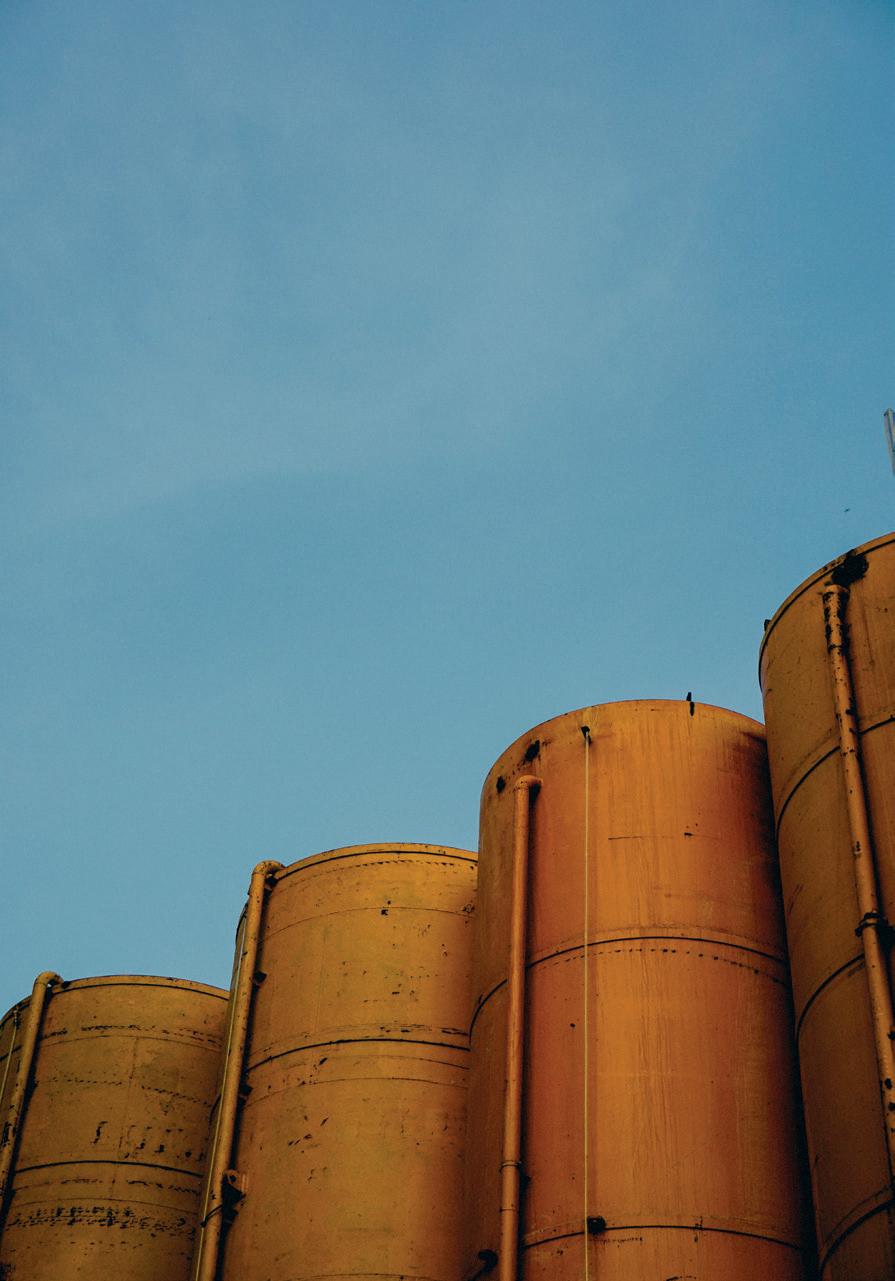
Some organisations are doing really well with this, some are dabbling and many are still to realise or confused…
Some have a digital commercial strategy and have rewired their commercial processes to become digital first, others are still thinking/ hoping that those occasional posts from the marketing team on the company page will be enough to win in the digital twin of their sector.
• As buying moves further to digital first, as prospecting and networking moves more to digital first, as our entire commercial worlds transform to digital…it’s likely you don’t want to be left behind, and its lilley you will see that you can lead in your sectors.
• As digital commercial worlds grow there is an opportunity to turn the volume down on your competition and ‘own the air’ around your specialist area - to be seen and understood as the clear and true answer to those problems your sector - to provide so much evidence of your expertise and personality that people in your space begin to trust you - people leaving schools, colleges and universities want to work with you, because they feel they know your business - harnessing the power of your complete team and experiencing the buzz that they all feel being part of something special.
Eric Doyle is the Managing Director of The OGV Studio, a Digital Media Strategy company whose mission is to Energise your Media for growth. Eric is a Fellow of the Institute of Sales Professionals.
10
AGO 5 YEARS AGO 1 YEAR AGO
“GOOD MEDIA MAKES PEOPLE VISIBLE, GREAT MEDIA MAKES THEM THE LEADERS IN THEIR SECTORS...”
YEARS
Brent Oil Column September 2023
At The OGV Studio, we believe in the transformative power of energising media. Scan the QR code to find out more. 19
SURINAME Block 58 Field Development Project TotalEnergies
$10 billion
APA Corporation has confirmed that the Krabdagu-3 appraisal well, drilled by the Development Driller III drillship, successfully tested three oil reservoirs 14km from the main discovery. Additionally, the company is studying an oil hub project that combines the Sapakara and Krabdagu discoveries that could see 800 million barrels of oil produced. A final investment decision on the future development is expected by the end of 2024.
BRAZIL Wahoo Field PRIO
$1 billion
PRIO expects that the drilling campaign and subsea installation/connection will start in October 2023. Topside adaptation works at the Valente FPSO are underway and manufacturing of equipment is progressing. First oil is expected in April 2024. In total, the field will require the deployment of 46 subsea structures, including six subsea trees (WCTs), two manifolds, one multiphase pump (MPP), eight inline structures (ILS), 18 umbilical termination assemblies (UTA), eight PLETs, one PLEM and two subsea control systems (SCS).
ROMANIA Neptun Block (Domino and Pelican South Fields)
OMV Petrom
$4.4 billion Saipem has been awarded a major EPCIC contract at the development. The work will comprise of construction of the gas processing platform, three subsea developments, a 30" gas pipeline approximately 160 kilometres in length, and an associated fibre optic cable from the shallow water platform to the Romanian coast.
Energy projects and business intelligence in the energy sector
www.eicdatastream.the-eic.com

The EIC delivers high-value market intelligence through its online energy project database, and via a global network of staff to provide qualified regional insight. Along with practical assistance and facilitation services, the EIC’s access to information keeps members one step ahead of the competition in a demanding global marketplace.


USA
Mad Dog Southwest Field Development (Subsea Tie-Back)
BP
$750 million
BP is assessing the installation of a five-well subsea tieback from Mad Dog Southwest to the Argos platform. In May 2023, the developers drilled the SWX4 appraisal well in the southwest region of Mad Dog and concluded an additional connection to the Argos platform would help maximise its use, especially with prospects nearby.
The EIC is the leading Trade Association providing dedicated services to help members understand, identify and pursue business opportunities globally.
It is renowned for excellence in the provision of services that unlock opportunities for its members, helping the supply chain to win business across the globe.
The EIC provides one of the most comprehensive sources of energy projects and business intelligence in the energy sector today.
WORLD PROJECTS
3 9 6 10 1 1 7 3 2 4 5 12 2 8 11 4
SPONSORED BY www.ogv.energy I September 2023 20
ANGOLA Block 15/06: Ndungu Oil Field – FPSO Eni


$1 billion
TechnipFMC has been awarded a contract valued at between $75 million and $250 million to provide flexible pipe for the project, while Aker Solutions will deliver eight infield umbilicals and spares totalling over 25 kilometres. Aker Solutions' facilities in Fornebu and Moss, Norway, will be responsible for project execution, engineering, and fabrication. Work will commence immediately, and completion is scheduled for the 4Q 2024.
CYPRUS Aphrodite Gas Field Chevron
$3 billion
Chevron has submitted the development concept to the Cypriot authorities following the appraisal well's positive result. FEED work could commence by the end of 2023, pending approval. A final investment decision could be made in 2024, and gas production could begin in 2027.
QATAR North Field Expansion Project
Qatargas

$4 billion
Qatargas has awarded SLB a 5-year contract with an option to extend for another 5 years to provide unitised Cameron wellhead and tree systems installed in 50 offshore wells and 5 onshore wells in the North Field South project.
AUSTRALIA Laminaria-Corralina Fields Decommissioning
Northern Territory Government

$260 million
Xodus has secured a contract for the decommissioning of the Northern Endeavour FPSO. Under the contract, Xodus will be working for the Australian government in providing advice on project coordination, regulatory and environment, health and safety, technical, quality assurance, and contract management for Phase 1 of the decommissioning of the Northern Endeavour FPSO. Phase 2 of the project will involve the permanent plugging and well abandonment while Phase 3 requires the removal of subsea infrastructure and remediation of the Laminaria and Corallina fields.

LIBYA Bouri Gas Utilisation Project
Mellitah Oil & Gas
$1 billion
Saipem has been awarded a $1 billion EPCIC contract from Mellitah Oil & Gas. The scope of work includes the engineering, procurement, construction, installation, and commissioning of a 5,000 tonnes Gas Recovery Module (GRM) on the existing DP4 offshore facility, along with the laying of 28 km of pipelines connecting the DP3, DP4 and Sabratha platforms. The project will involve significant lifting operations by the Saipem 7000 semisubmersible crane vessel.

ISRAEL
Leviathan Gas Field –Phase 1B
Chevron $570 million
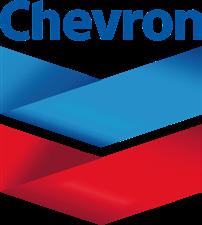

Chevron has awarded Corinth Pipeworks a contract to fabricate and supply approximately 118 kilometres of arc-welded steel pipes needed for the new pipeline. The pipes will be fabricated at Corinth's facilities in Thisvi, near Athens, with installation work set to begin in 2024.

INDONESIA Ande Ande Lumut Oil Field
$800 million
Prima Energi has completed the acquisition of the Ande Ande Lumut field and no plans to develop the field through an early production scheme with first oil production targeted to be achieved in 2026. The plan will involve the construction of a central processing platform (CPP) or wellhead platform. It will also include the drilling of up to eight production wells. The project also calls for conversion of a tanker into a floating production, storage and offloading vessel, or a floating storage and offloading facility.

NEW ZEALAND Tui Field Decommissioning
Tamarind Resources



$101 million
Sapura Energy, through Sapura Project Pty Ltd has secured a contract for the Tui Field Decommissioning Programme. The contract covers the recovery of four mid-water arches, its gravity bases, and tethering chains from the Tui field, and will be offloaded to a laydown area at Port Taranaki for processing and removal. The scopes are expected to be conducted from December 2023 until March 2024.
WORLD PROJECTS WORLD PROJECTS SPONSORED BY 12 9 5 6 10 11 8 7
21
DIGITAL TRANSFORMATION IN THE ENERGY INDUSTRY
By Tsvetana Paraskova
Digitalisation is helping both oil and gas producers and the clean energy industries to innovate, maximise efficiency of operations, and streamline costs.
Digital geophysical surveys and digital twins are already in use en masse among oil and gas exploration and production (E&P) companies, while various technology tools are deployed in the clean energy industries to accelerate the energy transition to greener sources.
Every company looks to use data analytics and various forms of artificial intelligence (AI) and machine learning to be an early adopter of technologies that can make the difference and place the firm ahead of competitors in an increasingly digital world.
Digitalisation in the Oil & Gas Industry
The oil and gas industry is accelerating the adoption of digitalisation as companies of all sizes and in all markets look to boost efficiency, cut costs, and maximise returns on investment and returns for shareholders.
Several recent examples of digitalisation include Petrobras awarding a five-year contract to SLB for an enterprise-wide deployment of its Delfi™ digital platform as Brazil’s state-held oil and gas giant looks to accelerate its digital transformation.

The contract scope covers Petrobras’ digital transformation from exploration, development, and production operations, including moving subsurface workflows to
the cloud to significantly accelerate decision making. The award represents one of Petrobras’ largest investments in cloudbased technologies and sets the foundation for it to achieve its decarbonisation and net zero targets.
“By leveraging AI, machine learning, and highperformance computing technology from SLB, Petrobras will drive aggressive efficiency and production increases across its E&P business,” Rakesh Jaggi, president, Digital & Integration, SLB, commented.
“Leveraging the Delfi platform to digitally transform Petrobras’ E&P workflows, will improve efficiency and demonstrates its commitment to sustainability and energy transition.”
SLB says that its platform, with AI and machine learning applications, reduced fault interpretation time in petrophysical modeling workflows by 60 percent.

SLB has also announced an alliance with Italian energy major Eni SpA to deploy e-vpms® (Eni Vibroacoustic Pipeline Monitoring System) technology, an innovative vibroacoustic wave detection system capable of providing real-time analysis, monitoring, and leak detection for pipelines around the world.

Enivibes, a subsidiary of Eni, will bring the new proprietary pipeline integrity technology to the global market through SLB’s industry-leading digital expertise and operations in more than
100 countries. The e-vpms technology can be retrofitted to any pipeline, regardless of age, providing immediate integrity data essential for maintaining a network’s continually reliable operation, SLB said at the end of July.
“Operators will be able to receive reliable and specific real-time information, allowing for focused and timely responses, especially in instances of an environmental nature,” said Ziad Jeha, business line director, Midstream Production Systems, SLB.
Several international majors have recently teamed up to develop and implement a digital inventory using 3D printing, more accurately known as Additive Manufacturing (AM) Equinor has teamed up with TotalEnergies, Shell, ConocoPhillips, Vår Energi, and Fieldnode to develop and implement this globally.
Digital Inventory, also called Digital supply Network, is set to transform the supply chain in the industry, Equinor says. This is a way of connecting all suppliers and end users in the energy industry, and to combine the digital recipe with on-demand manufacturing of spare parts.
“3D printing, more accurately known as Additive Manufacturing (AM) is quickly turning from a disruptive, fringe technology to a requirement in our industry, and we are already using it extensively to solve supply chain challenges and innovate faster, boosting productivity and
The energy industry is undergoing a major transformation as the energy transition progresses while energy customers are focused as much on decarbonisation as on security of supply.
22 www.ogv.energy I September 2023
Leveraging the Delfi platform to digitally transform Petrobras’ E&P workflows, will improve efficiency and demonstrates its commitment to sustainability and energy transition.
cutting costs from oilfield to refinery,” Equinor says.

According to McKinsey & Company, only 30 percent of oil and gas companies have successfully scaled digital manufacturing.
“Our work with oil and gas clients shows that only 30 percent of companies have successfully scaled digital technologies to deliver meaningful improvement. Usually, technology isn’t the problem. Most tech transformations stall due to fundamental cultural and organizational barriers,” Thomas Hansmann, a partner in McKinsey’s Jakarta office, said at the end of last year.
Yi Zhou, an associate partner in McKinsey’s Singapore office, added,
“Now, oil and gas companies want to embed tech-enabled operations into every part of their business. To do this right, oil and gas CEOs need to upgrade the capabilities of the people and revamp their information infrastructure, while remaining laserfocused on ensuring that the digital efforts generate real value.”
Digitalisation for Decarbonisation
Digital transformation is a key enabler not only for the oil and gas industry but also for the clean energy industry and for speeding up decarbonisation if countries want to have a chance to reach net zero by 2050. Digitalisation of the
power systems and grids needs to accelerate and investment needs to grow now because time is of the essence to avoid much higher costs later, the International Energy Agency (IEA) says
“Digital technologies and data hold tremendous potential to forecast and match electrical supply and demand, thereby cutting costs, improving efficiency and resilience, and reducing emissions,” according to the IEA. More efforts are needed in digitalisation, the Paris-based agency added.

Grid-related investment in digital technologies has grown by more than 50 percent since 2015, and is expected to reach 19 percent of total grid investment in 2023 globally. There is an increasing focus on the distribution segment, which now represents more than 75 percent of the total digital spend. There has also been a substantial increase in investment
in electric vehicle (EV) charging infrastructure, which doubled in 2022 compared to the previous year, according to the IEA.
Investment in digital-related grid efficiency continued to grow to a new high of US$63 billion in 2022. Expanded EV charging infrastructure was the main driver of growth, with global investment in public EV charging reaching US$16.8 billion last year, a more than tenfold increase from US$1.5 billion in 2018, reflecting the rapidly increasing number of EVs.
“However, further efforts by policy makers and industry will be necessary to realise the full potential of digitalisation to accelerate clean energy transitions. This includes the implementation of enabling standards, policies and regulations that prioritise innovation and interoperability while addressing risks to cybersecurity and data privacy,” the agency noted.
To get in step with the net-zero scenario, the global inventory of flexible assets needs to increase tenfold by 2030, which means that all sources of flexibility – including batteries and demand response supported by smarter and more digitalised electricity networks –need to be leveraged, the IEA said.
Enabling digital technologies such as smart meters and distributed monitoring and control devices is essential to fully exploit the flexibility potential of the growing number of connected devices, according to the agency.

“Power grids are among the unsung heroes of the energy transition, but they need massive investment,’’ IEA Executive Director Fatih Birol said in June, commenting on an IEA report on the digitalisation of power systems.
“While much attention goes to solar panels and electric vehicles, it is grids that connect everything together. By digitalising our grids, our power systems become more reliable and secure, and our utilities can better manage the balance of electricity supply and demand,” Birol added.
“The longer we wait to upgrade and digitalise our grids, the more expensive it will get.’’
DIGITAL TRANSFORMATION 23
On the same page
At a very quick glance, Proserv, a longstanding controls technology business with multiple sites across the globe and rubbing shoulders with some of the biggest OEMs and service providers around, and Intelligent Plant, a small but growing award-winning data analytics disrupter, might not appear to be the most obvious of fits. But you need to take a closer look.
In truth, Proserv does have history for forging innovative partnerships, whether with fellow supply chain leaders in the US to underpin its subsea oil and gas offering or with university spin-outs to further its push into offshore wind. But it was a shared philosophy around data access and how it can unlock advantage for clients that brought these two Aberdeen based companies together. As Steve Aitken reveals:
“I first met Stuart Harvey, Proserv’s VP, Digital Innovation when I was speaking at a conference and we got talking about some of the things we were doing. We realised that we were both facing similar challenges, but in different spaces. Us from a digital viewpoint and Proserv from a controls hardware perspective.

“We share many values and it was really great to find out that there was someone else out there who had the same regard and approach
to using data, the benefits of data analytics, and how this can empower operational strategy and performance.”

Positives from the pandemic
Davis Larssen adds that in the early days, as he and Steve began to connect personally, it was a question of building trust and a foundation. It was the advent of the first pandemic in a century that, quite conversely, enabled the two business leaders to forge greater understanding of their respective outlooks and to cement their relationship – just as social distancing was keeping many other people apart.
“With two companies of contrasting size and scale, it isn't necessarily easy for them to come together as a true partnership, and so Steve and I spent a lot of time establishing that solid ground.
“Ironically, while we talk about shared digital philosophies being at the heart of our alliance, Covid-19 actually played a positive role in moving it forward. Due to some of the restrictions in place, Steve and I would often simply meet up outside for a walk and a coffee. Sometimes this could be for up to a couple of
hours, and that allowed us to get to the core of a lot of issues and build a really fundamental basis for the two companies.”
True to his innovative instincts, Aitken suggests the informal nature of these meetings acted as a unique catalyst to accelerating the Proserv and Intelligent Plant relationship. So, in December 2020, the two teams announced their first strategic partnership and the aim to roll out digital technology solutions that not only reflected their shared philosophy around secure yet open data access and visibility, but also mirrored their ethos of being independent, scalable, flexible and accessible.
Compatible capabilities
Aitken says their compatible skill sets in fact make Proserv and Intelligent Plant a very good fit indeed:
“We are essentially software focused and so we do not have a background in hardware. But all of our software is effectively monitoring hardware. And in the energy industry, clients basically want software solutions that can look at and understand what’s going on with their hardware. It’s key.
“So to come together with Proserv’s own domain knowledge, its reputation and long standing in the industry to recognise what sort of problems might exist, and even how we might better run our applications, is a real advancement for us and not something we could have done alone.”


Larssen believes the incorporation of Intelligent Plant’s specific capabilities have now enabled their mutual team to challenge clients to make a 360 about addressing impending issues or downtime.
“Proserv supplies control system solutions both topside and subsea and these allow our clients to get hold of the data that can tell them exactly what is happening across their asset. What would invariably happen is that an operational alarm would trigger, the customer would then call us, give us access to their firewall to grab the data and we would then tell them what had occurred.
"There's an opportunity to turn this approach around to be more productive. So rather than our clients needing to call us with a problem, often followed by a reactive investigation, if we have constant monitoring in place, then we can identify anomalies long before they cause real issues."
Larssen mentions that Intelligent Plant’s input and expertise has “transformed our working relationships with several customers” due to its ability to “engage its applications to access data in the right way, while always recognising security protocols.”
DIGITAL TRANSFORMATION
Davis Larssen, CEO, Proserv and Steve Aitken, Founder, Intelligent Plant tell OGV Energy’s Dan Hyland how shared values, compatible skill sets and even Covid-19 have ignited an alliance looking to take advantage of how data can be maximised.
Providing leading controls technologies to enhance performance, optimise assets and extend life right across the energy sector. For more information, see our website: proserv.com
Proserv’s Davis Larssen Intelligent Plant’s Steve Aitken
24 www.ogv.energy I September 2023
“With two companies of contrasting
size
and scale, it isn't necessarily easy for them to come together as a true partnership, and so Steve and I spent a lot of time establishing that solid ground."
Digital into Renewables

Proserv and Intelligent Plant first took its combined offering to the oil and gas sector, working with a leading independent in the Gulf of Mexico that recognised how live data analytics could enhance O&M strategy and operational reliability. With the need to transition away from hydrocarbons, it is no surprise to see Larssen and Aitken emphasising the potential for their tie-up in renewables.
For Proserv’s CEO, this marks another step on an on-going pivot that has seen its most tangible outcomes thus far through its ECG™ holistic cable monitoring system, very soon to be installed on the world’s first commercial floating wind farm – Equinor’s Hywind Scotland. Larssen sees Intelligent Plant’s know-how being integrated into this solution:

“While a lot of our initial work with Steve has been with core oil and gas customers, we were already looking at incorporating Intelligent Plant’s capabilities within ECG™. Cable failures are a massive challenge for offshore wind and we can work together with Intelligent Plant, alongside our wider ECG™ technology

consortium including Synaptec and BPP Cable Solutions, to address this. More broadly, we can take this technology wherever cables need to be monitored.
“We regard our alliance with Intelligent Plant as propelling our pivot into renewables and anywhere a client has data that can be extracted from its hardware to deliver insights as to how vital infrastructure is performing, we can work collectively on achieving that.”
Intelligent Plant itself has previously linked up with the European Marine Energy Centre (EMEC) to generate a data acquisition system for Orbital Marine Power’s O2 floating tidal turbine located in the Orkney Islands, enabling remote access to real-time, mission critical data and supplying a cloud-based platform for EMEC to allow their clients to access information remotely, securely and live.
Aitken sees synergies across the sector. “The same challenges that exist in subsea oil and gas also occur in wind. It is all about making sure data can be accessed by the right people. Sometimes there can be multiple issues standing in the way of getting hold of data as a client. Someone might just say ‘you don’t own that, we do’.
“So, clients are interested in partners that take a different route, ones recognising this is their data and who want to help them access it.”
Earlier this year, the two businesses announced a further tie-up, not only reinforcing Proserv’s position as a worldwide distributor and supplier for Intelligent Plant’s various products and applications, but to spark further collaboration and it saw Larssen join the Intelligent Plant Board. Aitken explains the thinking:

“Davis provides a unique and insightful view on how the company runs. He has the experience, and the valuable perspective, of leading a much bigger company yet has worked with smaller businesses too. With Davis joining our Board, we gain live feedback, in both directions, to take the partnership forwards. It was an entirely natural next step, and it demonstrates the commitment, respect and trust that exists between both teams.”
Inform Prize
Davis and Steve’s relationship is rooted in shared values and later this month, Proserv and Intelligent Plant come together again for the latter’s Inform Prize, a project in its tenth year and involving computer science students from both the University of Aberdeen and Robert Gordon University. Proserv is a lead sponsor. Larssen remarks:
“This initiative fosters innovation, collaboration and teamwork to create solutions for challenges. Bringing skills together to drive change – very similar to what Proserv and Intelligent Plant are doing. It is an excellent platform and taps into our shared values around nurturing and supporting talent. We are currently looking at expanding the model into new territories, such as the Middle East, to support skills growth in that region.
“Another opportunity where we can collaborate once more.”
DIGITAL TRANSFORMATION Building and providing best-in-market apps for analysing, visualising and interrogating process and alarm data. Visit: intelligentplant.com
A tidal turbine dashboard operating in real-time (image courtesy of Intelligent Plant)
25
Equinor's floating wind farm Hywind Scotland where Proserv's ECG™ is set to be installed. ©Equinor
Changing Field Service Management.
Client Testimonial:
“Arnlea were excellent at assisting us in solving many problems at a granular level, understanding our needs and enabling a smooth data migration onto the Nexar platform. We then had a solid basis for moving forwards in establishing consistent and accurate CompEx data across the plant, enabling our inspectors to successfully resolve many issues and dramatically improve the quality and accuracy of reporting to the client and safety monitoring. We find that the app gathers all the data well, and custom reports enable us to present professionally to the client. Back-office management of the site in Nexar is very straightforward.”
James Bottomley, IT Manager, Vaporline Consultants
Security: Arnlea's Nexar has obtained ISO 27001 and Cyber Essentials accreditations, ensuring a secure environment with proper validation and authentication of EPR/EAM system users on its handheld mobile devices or desktop applications.
To meet these demands head-on, Arnlea, a pioneering provider of innovative software solutions, has introduced Nexar, a cuttingedge Software as a Service (SaaS) solution that revolutionises traditional field service management practices.


Gone are the days of cumbersome paperbased processes, which often lead to delays, errors, and lost data, not to mention the considerable time taken for data collection, analysis, and reporting. In today's competitive landscape, companies need dynamic information delivered rapidly, enabling better-informed, strategic decision-making to stay ahead of competitors and adapt to market fluctuations.
Nexar rises to this challenge by seamlessly connecting field data to the office in real time. It empowers office staff with up-todate information from the field, facilitating more informed and timely decision-making. Front-line workers, equipped with the latest handheld, fixed reader, RFID, and barcode technology, can execute their field operations quickly, easily, and safely. As a result, companies can enhance productivity, safety, and compliance while significantly reducing operational costs.
So, what are the tangible digital benefits of employing Nexar in your organisation?
Efficiency: Nexar effortlessly integrates with its clients' corporate ecosystems, consolidating data from various sources into one digital system. This enables companies to monitor the health and performance
of their assets efficiently. Moreover, the platform provides powerful analytical tools that predict maintenance needs, optimise resource allocation, and enhance overall asset performance.
Reduced Inspection Times: With a RiskBased Inspection (RBI) strategy configuration, Nexar can cut inspection campaign times by up to 50%. This approach allows companies to prioritise critical assets, saving time and resources while maintaining high safety standards.


Safety: Health and safety is critical in the Energy industry, and Nexar's user interface, experience, and enhanced mobility options reduces the time inspectors and field workers spend in hazardous areas, enhancing overall safety.
Compliance: Using traditional methods of pen and paper and storing data in multiple databases often leads to the loss of data; therefore, making companies non-compliant with industry standards. However, Nexar fully complies with international standards and guidelines, including ISO 9001 and ISO 27001, as well as business and material management regulations. By utilising Nexar, companies can ensure adherence to their business standards and stay compliant with industry requirements.
Sustainability: Nexar fosters operational efficiency, reducing the time inspectors need to spend in the field and lowering transportation costs. Additionally, being cloud-based, Nexar helps reduce CO2 emissions by half compared to an on-premise server.
Analytics: Leveraging Nexar's powerful analytics and reporting capabilities, energy companies can make informed, data-driven decisions. The software provides in-depth insights into asset performance, workforce productivity, and operational efficiency. By analysing this data, companies can identify trends, optimise processes, and develop strategies for continuous improvement, resulting in higher profitability and customer satisfaction.
Communication: Effective communication and collaboration are critical in the Energy Sector, where field technicians often work in remote and challenging environments. Nexar provides real-time data, enabling realtime collaboration, ensuring faster issue resolution, improved knowledge sharing, and enhanced teamwork, ultimately boosting overall productivity.
In conclusion, Nexar by Arnlea has emerged as a game-changer in the Energy Sector's field service management landscape. Using cutting-edge technology and offering a userfriendly, scalable, and customisable platform, Nexar empowers energy companies to embrace digital transformation fully. With streamlined asset management, mobile field data capture, enhanced safety and compliance features, real-time communication, and datadriven decision-making capabilities, Nexar enables energy companies to optimise their operations, improve efficiency, and reduce costs. As the Energy Sector continues to evolve, Nexar stands at the forefront, ensuring that companies remain agile, competitive, and future-ready. Embrace Nexar today to unlock your company's full potential and stay ahead in the dynamic Energy Sector.
In today's rapidly evolving world, the Energy Sector faces many challenges, requiring efficient and reliable field service management solutions like never before.
26 www.ogv.energy I September 2023

Making and Maintaining the Right Connection
Destec Engineering has specialised in the manufacture of high pressure Flanges, Seals & Connectors for the Oil, Gas & Renewable Energy Industries for over 50 years.


PRODUCTS WE DELIVER:

— Destec Compact Flanges
— DESALIGN Misalignment Flange
— G-Range 4 Bolt Connectors
— Compatible Seals
— GSB Subsea Single Bolt Clamps

SERVICES WE OFFER:
— On-Site Machining
— Bolt Tensioning
— Special Purpose Machine Tools
— Laser Alignment Services

— NDT Services
— Regenerator & Vessel Head Removal
T: +44 (0) 1522 791 721
F: +44 (0) 1522 790 033 service@destec.co.uk sales@destec.co.uk WWW.DESTEC.CO.UK

UK-based technology makes waves across the Atlantic
UK-based DaaS model business Viper Innovations is continuing to strengthen its position as a technology leader in the global subsea oil and gas industry with the announcement of its new US-based corporation.
Following the international success of Viper’s award-winning products and services over the last decade, the company’s unique technology is widely recognised as an essential subsea tool.
Viper’s innovative V-LIM and V-LIFE solutions for low insulation resistance (IR) have shown proven results within the industry since 2012. With an impressive track record of customer success across six continents, the company helps operators to maximise the operational life of mission-critical controls and electrical distribution equipment.
Following a large amount of interest and requests for the technology from operators across the Atlantic, Viper has applied its successful model to the US market and recently appointed Jamie Carrig as President of Viper Innovations Incorporated. The Gulf of Mexico in particular has seen significant investment in new infrastructure, including projects in the deep waters of the outer continental shelf (OCS) and high pressure and/ or high temperature (HPHT) environments. These challenging operating conditions create
an increased need for more complex and resilient subsea infrastructure, and in turn more intelligent technology to monitor and mitigate against critical failures.

In a recent installation in the Gulf of Mexico for a major operator, Viper’s insulation resistance recovery (IR) software, V-LIFE, was used to avoid a threat to continued production of a subsea production control system, resulting in an IR increase of 200 times within a week. The channel continues to show strong and consistent IR results; providing optimum operational levels and avoiding the need for costly subsea repair or replacement.
The adoption of Viper’s technology in the Gulf of Mexico will create opportunities to support more operators in applications where V-LIM and V-LIFE can help recover the electrical integrity of subsea circuits suffering from low insulation resistance. These faults often lead to loss of power or communications to subsea equipment and have the potential to halt production from subsea wells.

Some call it avoiding a shutdown. We call it SUPPORTING BUSINESSES
V-LIFE is the only preventative and active ‘healing’ solution for low insulation resistance caused by water ingress.
Our patented technology has been designed to recover the electrical integrity of failing subsea circuits in the oil and gas sector. The only solution other than costly subsea repair or total umbilical replacement.
Supporting businesses with the critical supply of gas from subsea fields.
Edward Davies, Managing Director of Viper Innovations, commented: “Viper’s continued success across the globe underlines the ever-growing need for our customers to use technologies such as V-LIFE as part of their critical ‘tool kit’ of solutions, helping to mitigate against the loss of production and costly subsea interventions.”

www.viperinnovations.com/v-life-technology #powered by purpose Find out more…
V-LIFE technology supporting operators for over a decade
+
DIGITAL TRANSFORMATION 29
Whatever the industry. Whatever the environment.
Whatever the need. We have the power to deliver.
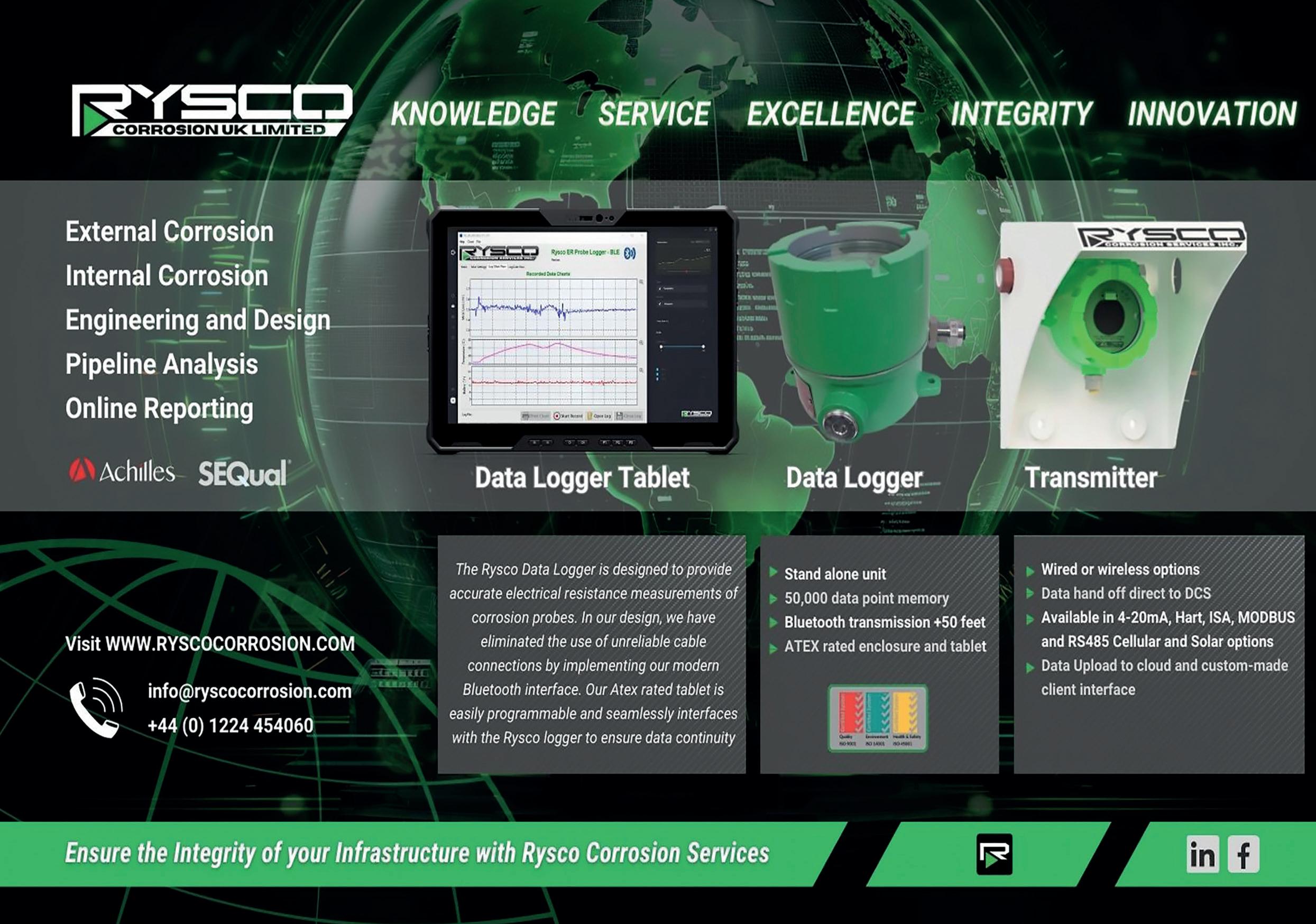
Genny Hire is an equipment rental company specialising in the hire, sales and service of power solutions suited to a wide variety of applications in the offshore and renewables, maritime, agriculture and events sectors.

GennyHire.com


Digital transformation; a Journey, not a Destination

It seems not a day goes by without receiving unsolicited emails offering an agile digital transformation nirvana – how they beat spam filters is possibly a testimony to the sender’s digital ability (so maybe we should read their proposals…)!
The cynic in us usually intervenes in such cold calling and our better sense tells us that no one knows our businesses like we do and our snap, ‘delete-before-reading’ decisions are more often than not the right ones; the buck stops with us. If we want change (of any kind), we must identity and address it ourselves.
If we need change, there are a few primary questions that we need to ask ourselves; what we aim to change, why we need or want it, who will benefit from the change and the final, and possibly the most important question, how we plan to make the change; this output is our Roadmap.
Even with all of these questions answered and a robust roadmap landed on, there is no guarantee of success. According to a recent survey, 70% of digital transformation initiatives fail to meet their goals (and alarmingly, 30% of these initiatives result in a loss of revenue for the organisation implementing change). Who’d want to be a decision maker with those stacked odds?
The fact is we live in a digital age and leveraging digital technology is a fundamental business need - those who wish to remain analogue are left in a long wake with others already digitally invested in the far distance; Video may have Killed the Radio Star back in 1979 but digitalisation didn’t do anyone any harm, so why not embrace it?
CAN Group’s own digital journey is an integral part of its business DNA. The asset integrity and inspection arena is an exemplar of what can be achieved when embracing digital technology. From the early days of data logging inspection results, to the use of digital twin technology to plan and execute work scopes in a more productive and cost-efficient manner, CAN is invested. It is important, however, to acknowledge that any transformation is a journey and not a ‘One and Done’ event, much more an evolution process which is CAN’s modus operandi. To follow are a couple of recent examples of pushing the digital transformation envelope:
Artificial Intelligence Corrosion Detection
A key aspect of digital transformation is process improvement through the adoption of new technologies. As part of the drive to optimise inspection deliverables (and cost), CAN Group has developed a solution for visual inspections to be conducted at speeds which are unobtainable through traditional rope access techniques, by utilising high resolution imagery captured by its Unmanned Aerial Vehicles. Accurate 3D models of entire assets are quickly generated from the image data, providing our clients with a tool that enables them to make fast and well-informed decisions on specific integrity threats, as well as generating cost efficiencies and overall safer operations.
Building on this capability through partnerships with industry-leading technology providers, as well as with smaller academic research institutions, CAN has been developing Artificial Intelligence corrosion detection solutions to further accelerate the inspection process. Deep learning models such as convolutional neural networks are being used to analyse large volumes of data almost instantaneously. Data accumulated over multiple inspection campaigns will eventually lead to a mature model capable of fully automating the data analysis and reporting work flow. Whether it be Artificial or Human Intelligence driven, CAN are actively innovating and improving the inspection process.
Tablet Reporting & Digital Workpack Generation
Adopting Tablet-based Reporting has been a shared goal for many Operators over the last 10 years, but the challenge in ensuring this tool is a success has been determining how to fully integrate this technology with the overall Integrity Management process.
This has been realised by the combination of CAN Group proprietary systems, CANtab and ENGAGE; producing digital workpacks in the ENGAGE Workpack module which are synced to the tablets and available immediately to the inspector offshore.
The real win, however, is in the reduction of manual data handling. Gone are the days of hard copy workpacks collecting dust on a desk offshore, awaiting completion and review before being ‘choppered’ back to the beach for manual data entry. This was another pinch point which ultimately added to the potential “hidden threat” contained within inspection reports, slowly working their way through the mill before eventually being input and reviewed, along with any Anomalies raised, sometimes months after the fact. With Tablet Reporting, an electronic report is generated as soon as the data is entered on the tablet and with the push of a button at the end of the shift, the digital report is available for onshore to review and approval – ensuring that anomalies are raised in real time. This eliminates manual data entry, freeing up valuable resource and increasing the efficiency of the overall process, with a clear and traceable digital workflow –a key example of how digitalisation of core processes can deliver very real and tangible added value.
Whatever your business and whatever your digital transformation roadmap may look like, treat it as a journey. If you find yourself on the wrong road or have hit a dead-end, don’t blame the Satnav, blame the driver (and if you have a co-driver, they can share the blame) but remember, you can always put the brakes on and reroute to get back on the right track (consider the 70% failure metriceven if you hope you might arrive trust your instinct, otherwise you will probably end up further away).

If your digital roadmap is focussed on Asset Integrity Assurance and Plant Reliability, CAN Group has a suite of tried and tested digital systems that will help ensure that you are heading in the right direction; avoiding the 70% and 30% potholes.
Yours ‘digitally’ CAN Group


Your Digital Roadmap
iStock.com/ Ket4up
For more information visit www.cangroup.net 31
NORM Decontamination
Pollution Prevention

Emergency Oil Spill Support

Water Jetting Training

sureclean.com Tran�formative indu�trial cleaning.
A for inspiring innovation and driving environmental advancements to protect our planet for future generations. www.
EXPLORING THE DIGITAL DILEMMA: THE THREATS AND OPPORTUNITIES FACING THE ENERGY SECTOR
With digital technology advancing daily, it’s time for businesses to realise that neglecting digital transformation may not be an option. So, what are your options? Do you embrace the digital revolution, and the benefits that are introduced? Or continue with the status quo, and risk being left behind? There are risks associated with making any type of change to your business and this article explores the major energy industry threats & opportunities, facing organisations today and in the future.
When looking at potential digital solutions to help your business grow, there are key points to consider that will help you achieve the right results -

Threat –Selecting The Wrong Solution
Selecting the wrong digital solution is an inherent threat in its own right. Having a list of requirements and input from key stakeholders is key before you get too far into reviewing options. Reviewing and testing options with key stakeholders will also help to improve the adoption of the final selection. If suppliers are reluctant to let you test their product it’s probably a sign that you don’t want to use it!
Threat –Overcoming The “We Always Do It This Way” Mentality
All organisations include people with all types of personalities and getting a 100% buy in to start using new digital tools is impossible. Focusing on, and communicating, the benefits and reasons for change will help this process. Allowing feedback from all personnel will also help to make it feel like an inclusive process and will lead to better technology adoption.

Threat -
Compatibility With Your Practices
Even the most customisable digital tool is unlikely to ever match a company’s internal processes completely. Reviewing current methods will help streamline the approach and remove issues that could be encountered, removing frustrations for all users.
Andy Sutherland
Director
Prism Energy Threat –Cyber Security

Cyber attacks are an increasing threat to organisations and increasing the use of digital tools heightens the likelihood of an attack. Evaluating cyber security measures for products will help to mitigate these types of events. Suppliers investing in Cyber Essentials & ISO27001 certification demonstrates a commitment to prioritising security.
OpportunityIncreased Efficiency
Feedback from customers who regularly take advantage of digital systems, report that meetings are more effective, and in some instances, cut by up to half resulting in higher productivity from increased staff utilisation.
OpportunityCollaboration & Information Sharing

Off the back of the 2020 remote working revolution, digital collaboration has become an increasing requirement. The ability to connect project teams and stakeholders electronically to facilitate remote collaboration has been at the forefront of the digital transformation revolution. Platforms such as Microsoft teams, Zoom and Google meets, have allowed for greater data sharing and inclusivity across the board. As the digital transformation continues to evolve, it is likely that digital systems will become widespread.
Opportunity –Data Driven Work
Spreadsheets are great, however, there are limits to how the data stored can be manipulated. Purpose built or bespoke digital systems provide opportunities for organisations to specify end user requirements.
Opportunity –Information Security
By selecting a supplier with the right credentials, organisations have the opportunity to invest in highly effective cyber security. Demonstrating a commitment to cyber security is a valuable USP.
Good Luck On Your Digital Journey!
For more information visit www.prismenergy.co.uk 33

FIRST NORTH-SEA ELECTRIFICATION SCOPE AWARDED TO WORLEY

With the UK Net Zero targets clearly set by the North Sea Transition Deal, as launched in March 2021, the drive to clean energy through progressive improvement has commenced strongly across the sector. Worley recognise the importance of solutions that consider the expanding range and magnitude of various renewable power sources; specifically, how their integration with oil and gas assets can reduce and even remove the traditional means of local hydrocarbon-based power generation.

“Through the collaboration with Worley, we are proud to support the energy transition with yet another electrification project taking it one step further with our subsea transformer technology, says Gunnar Lie, Head of Project Delivery – Subsea and New Energy, ABB Norway. The combination of automation and electrification is the key to reducing carbon emissions in the oil and gas sector.”
This technology as part of an integrated design is an outstanding solution to the offshore decarbonisation issue, with offshore power generation being the primary source of asset CO2 emissions. Providing real solutions for real issues, with best market technology is why Worley are demonstrating outstanding progress in the path to Energy Decarbonisation.


Worley’s attitude and drive to real transition is clearly demonstrated within Ithaca’s Captain Electrification project, which Worley are leading as primary FEED contractor. This would see the partial electrification of the Captain asset, with primary power being provided from renewable sources onshore, transmitted to the Captain field at 132kV and stepped down locally for connection to the asset at 11kV. The project becoming wholly more viable through revolutionary subsea high-power technology, developed by one of the world’s premier power system providers (ABB) and introduced by Worley to the Captain project in the Pre-FEED stage. This Worley led collaboration with ABB and Subsea7, now progressing through FEED sees the implementation of emergent high power subsea transformer technology. The removal of this single item from the topside structure to the seabed brings a significant reduction in topsides impact and thereby project cost, offshore labour and risk profile; plus, the major reduction of multiple and prolonged impositions to live asset operations.
Dr Kirsten Oliver, VP, Energy Offshore Worley commented “What excites us most is seeing collaboration and partnership across the industry and greater speed in innovation. The need to think differently has meant that we’re being more creative, which is leading to new and exciting outcomes.”
Alan Bruce ,CEO Ithaca commented “We are pleased to partner with Worley to evaluate the potential for electrification at our flagship Captain field. The electrification project requires complex solutions to a number of challenges and our partnership with Worley allows us to benefit from the power of collaboration, harnessing the collective talent of both the Ithaca Energy and Worley teams.”
DIGITAL TRANSFORMATION
For more information visit www.worley.com
Over the years we’ve witnessed lots of change. But nothing we’ve previously seen compares to the great changes our industry faces today: the energy transition.
35
Discover Cegal Cetegra
A user-focused, cloud-based environment for your applications, data and people.
Digitalization made easy
Cetegra gives energy companies access to all applications and data in a unique, collaborative and flexible yet fully integrated solution.
Flexible Workspace
Seamless and cloud based, Cetegra offers an optimal work environment, for everyone, everyday, regardless of their location or device.
Effective cost management
Based on a pay-as-you-go model, Cetegra keeps operational costs under control yet scalable whenever needed.
Cetegra Workspace
Access to data, applications and services through one centralized web-based portal.
Cetegra Customer Care

Global round-the-clock support to help you maximize the business value of your technology.
Cetegra High Performance Desktop
Powerful and scalable virtual desktop supporting resource-demanding applications.






Cetegra High Performance Computing
Scalable, on-demand computing capacity for energy-specific workflows such as seismic processing, geomodeling or complex simulations.
Cetegra Data Room
Smart and secure virtual data rooms to support transactions, from due diligence to farm-out deals.
Cetegra Security

Protecting your most valuable assets in secure data centres.

Scan the QR code to learn more about Cetegra.
cegal.com

Cetegra Ecosystem at a
The
glance
ISO 9001
ISO 45001
ISO 14001

ISO 27001


Elevate Your OrganisationOutsource to QHSE ABERDEEN LTD for Expertise and Training

In the quest for operational excellence and regulatory adherence, businesses are increasingly turning to QHSE ABERDEEN LTD for outsourcing solutions. This move offers a host of advantages that can transform your organisation’s performance, while simultaneously delivering cost savings and legal compliance.

Expertise Beyond Compare
QHSE ABERDEEN LTD brings a seasoned team of Quality, Health, Safety, and Environment experts to the table. Outsourcing to them grants you access to specialised knowledge that might be hard to cultivate internally. Their deep understanding of regulations and best practices ensures your organisation stays at the forefront of safety and quality management.
Resource Optimisation, Enhanced Efficiency

The decision to allocate resources to core business functions versus QHSE management can be challenging. By outsourcing, you free up your team to focus on strategic growth initiatives. This agility translates into improved efficiency, faster project delivery, and heightened customer satisfaction. With QHSE ABERDEEN in your corner, resource allocation becomes a strategic advantage.
Cost Efficiency Redefined
Unlike maintaining an in-house team, outsourcing to QHSE ABERDEEN entails fixed costs that are often more budget-friendly. Their tailored services eliminate unnecessary overheads associated with full-time employees. Beyond cost savings, their proactive approach prevents incidents and minimises operational disruptions, yielding substantial financial benefits.
Training for Empowerment
A unique facet of QHSE ABERDEEN's offering is comprehensive training. Beyond managing compliance, they empower your team with the skills to sustain excellence. Training programs cover ISO Auditor Courses, beyond certification, H&S courses and environmental practices. This ensures your workforce is well-equipped to handle challenges independently, fostering a culture of continuous improvement.
Safeguarding Legal Compliance


In an environment where regulatory missteps can have dire consequences, QHSE ABERDEEN's expertise becomes a shield against legal risks. Their vigilant approach ensures your organisation adheres to evolving compliance standards, preventing potential legal pitfalls that could impact reputation and finances.
In summary, outsourcing to QHSE ABERDEEN LTD presents an unmatched opportunity for your organisation. With expertise, resource optimisation, cost efficiency, and comprehensive training woven into their services, this partnership not only secures compliance but also transforms your business into a beacon of excellence.















www.theimpulsegroup.com Specialists in Flexible Pipe and Subsea Integrity Management Contact us now: support@theimpulsegroup.com Morpeth Office: +44 (0)1670 704718 Aberdeen Office: +44 (0)1224 502550 Integrity Management I Project Management Design & Engineering I Installation Support I Training & Education Ancillary Products
After completing a 4-year apprenticeship with Ford Motorcars, in Gt Yarmouth, England, then discovering the Oil and Gas Industry in 1980, I secured my first employment in what became and remains the amazing, satisfying, challenging and rewarding Global Energy Sector. This year I am so grateful and proud to be celebrating the company’s 30 th year in business.
Working and travelling from 1980 to 1986 in the Inspection Sector of this industry gave me an appetite for travel, experience of different countries, cultures, and people. I also realised that I had a passion and hunger for working independently, problem solving and developing industry knowledge.
At that point of my career journey I asked myself how I could continue to pursue my passions, be entrepreneurial and use the experience and knowledge I gained, and the milestones I was fortunate to achieve, to give back to the Industry I love. Subsequently the opportunity presented itself in 1993 in Aberdeen, Scotland whilst I was working for a Global Inspection Company. At this time a major North Sea Operator was in search of someone with Inspection knowledge and a level of seniority and achievements to join a Quality Improvement Team to explore reducing Non- Productive Time caused by Drill String Failures. Six months into what became a six-year project I made the decision to start my own Company, whilst still being active in a Team of field experts who were focused on problem-solving NPT.
This experience supported my early passion for problem solving and gaining knowledge. I spent many a long day and late-night reading Industry standards, technical papers, and learning failure modes common to drill strings, and from this exploration the Fearnley Group NS standards were born.
The early days of Fearnley Group, or as it was originally known OCTG Consultancy Limited, provided me with a vision for the company’s growth. I could see that there was a gap for an organisation to specialise in reducing non-productive



time and an opportunity to become a niche, expert service to the Industry. This could be achieved by focusing on drill string failures whilst contributing to preventing expensive Well Operational down time and reviewing Health and Safety issues and environmental hazards, hence the Product Lines we decided to concentrate on and develop as a company.
QA/QC, Engineering, Training, Accreditation & Certification, Technical Publications




On the 30 year success of these Product Lines I am often asked “Do I personally have a favourite one or do I have a greater passion for one of the company’s services”, “Good Question”, I say. They have all served my appetite for knowledge, problem solving, travel, and growing a Global company together with a strong management team and valued employees, from the early days of 50 to a peak of 200.
QA/QC Well Operations - Due to my Inspection background, it has been rewarding to develop this Product Line with good operational managers and QA/QC engineers over the years. From our humble beginnings of focusing on Drill Pipe and BHA, we now cover a wide range of Drilling, Completion and Wellhead equipment and we continue to expand in this area.
Engineering – Technical Engineering Group – Centre of Excellence – Here lies my passion and indulgence. Apart from being Company CEO, I head up our Technical Engineering Group of Subject Matter Experts and what a formidable team they are as well as a joy to work with: giving us a broad and deep knowledge in Drill string
Kevin Fearnley CEO / Head of Technical Engineering Group/ NS Chairman/Drillstring Specialist/ SPE Co-Author of SPE 30348 Successful Reduction of North Sea Drillstring Failures
Failure Investigations, Drill string Design, and so much more - not least giving 24/7 support to our QA/QC field engineers and clients.
Training – I have really enjoyed running training courses over the years in Drill String Failure Prevention and Drill String Inspection for various Industry standards and not just our own NS-1™ and NS-2™. We now have a full offering on many training courses - Q1, Q2, NS™/DS®/API RP-7G/7-1, Drill String Design. Casing Wear, Drill String Failure and Stuck Pipe Prevention - with excellent and knowledgeable trainers that enjoy and share my passion for imparting knowledge and giving to others.
Accreditation & Certification – In our early days of developing NS-1™ (New Manufacture, and Refurbishment of Drilling and Well Completion Equipment covering, Quality, Inspection, Testing) and NS-2™ (Inspection of Used Drilling and Well Completion) we were asked by the Industry to provide an Accreditation service for Auditing Manufacturers for the conformance and compliance with NS-1™, Product Assessment/ Design Review, and much more. We are now in our 23rd year of approving Manufacturers to NS-1™, Product approval of Industry Drill Pipe Hard Banding and Drill String Connections to name only a few examples.
Technical Standards – NS Standards & Publications – Our contribution to the Industry. By capturing root causes and lessons learnt through our many Drill String and Well Completion Failure Investigations and adopting these into the Standards and Publications we have been able to share our knowledge gained.


30 years of achievement through loyal and dedicated employees. We owe them so much. With their support, commitment and trust we have been able to build a company with a strongly defined culture that has been successful in adapting to change and growth through the good and bad times.
Lastly to our clients, we are so grateful for the strong relationships we have built over the last 30 years and for the success stories we have shared together.
DIGITAL TRANSFORMATION
39







































































































































































































































































































































































































































































































































































































































www.pctevents-ecet.com Engineering Chemistry for the Energy Transition Conference & Exhibition In Person & Online! Listen to industry and academic experts on the role of chemistry in the Transition to Net Zero Carbon Capture and Shut In, Hydrogen and Alternative Energy Sources Geothermal and Sustainable Chemistry Enhanced Oil Recovery (EOR) and Sustainable Chemistry Sustainability and Treatment Optimisation/Digitalisation OGV Taproom, Bridge Place, Aberdeen, Thursday 7th September 2023 Speakers from ECET2023 Now a Hybrid Event!


Synchronised Global launch of MySep
Studio V6.0 at Oil & Gas industry events in Singapore and Aberdeen
MySep selects Gastech and Offshore Europe as the launchpads for official global release of an All-New version of flagship product, MySep Studio

ABERDEEN and SINGAPORE – Thursday 17
August 2023 – MySep Pte Ltd, the leader in innovative process engineering software for Phase Separator design and performance simulation, is celebrating its 10th anniversary year with the global release of a completely revamped MySep Studio.
Building upon the industry-leading features of its predecessors, MySep Studio V6.0 takes separation simulation and design to new heights by blending MySep’s incremental

modelling and proprietary correlations with the speed and efficiency of a modern code base, all packaged within an intuitive and flexible user interface.
According to co-founding director/CEO: Guy Hellinx: “Regarded as the industry gold standard and as a pioneer in separation modelling and software simulation solutions, we are thrilled to announce V6.0 at two strategically important locations; Singapore and Aberdeen. We started MySep as a dedicated process engineering software business in Singapore 10 years ago. We were focused on helping our customers in optimizing processes constrained by separation, with good design practice and physically representative modelling. We’ve grown our customer base from initially just a few operators to over 50 companies, including 8 of the 10 top international Oil & Gas operators

and 5 of the 10 top international EPCs. With V6.0 we’re redefining the industry standard for our customer’s future challenges in the decades ahead.
Key benefits of MySep Studio V6.0:
• Proven Excellence
• Intuitive User Interface
• Fast and Efficient
• User Customizable
• 3D Layout
• Improved Analysis
• Many more…
Customers include, leading Process Operators, Engineering Contractors and Separation Equipment Suppliers in Oil & Gas Production, LNG, Gas Processing, Refining and Petro-chemicals.

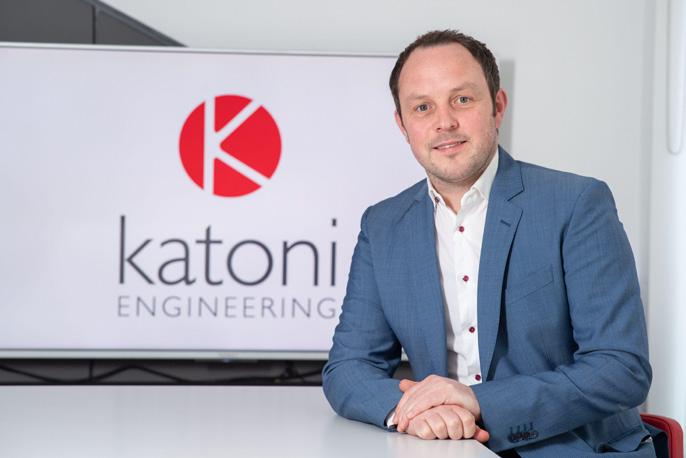
Conceptual Design - Debottlenecking - Operations Assurance Plant Optimisation - Root Cause Analytics and Troubleshooting Obsolescence Management - Due Diligence Safety Reviews - Functional Safety Studies - Technical Safety Services Electrical Safety Services (Arc Flash) - Cyber Security Performance Standard Reviews Net Zero Concept Development - Energy Transition Integration Emissions Reduction Studies - ERAP/Planning Support Smart Power Management - Power Optimisation Pre-FEED and FEED - Engineering and Design - Integrity Services Secondments - Constructibility - Execute Services Consulting Services Fraser Kerr fraser.kerr@katoni.com Safety and Compliance Debbi Blackwood debbi.blackwood@katoni.com EPC Services Duncan Brown duncan.brown@katoni.com WE ARE EXHIBITING AT OFFSHORE EUROPE - STAND 2M60 DIGITAL TRANSFORMATION
43
The latest version of the RCP RMS is designed to give operators a clear, unambiguous overview of critical drilling and mud data processes. The system has been developed by CP to greatly improve how information is presented using modern display technology, multi-colour and coded graphics and flexible screen configurations.

The RMS offers a quick and cost -effective solution for clients considering, total replacement of systems or a partial upgrade to their existing drilling instrumentation systems. Our technical in-house expertise allows us to tailor each new system to meet your exact needs meaning that you do not pay for functionality you will never use.
BASIC OPERATION
The RMS utilizes a variety of sensing technologies (Typically: Level, pressure, height, temperature and flow), to monitor the drilling process, sensor output signals are received by the distributed I/O racks and are then processed by the PLC CPU.
We are exhibiting! Come and speak with us at the ogv pavilion
Processed information is then transmitted through network communication modules to each of the user interfaces including remotely networked PC's and local HMI's. System and operator interface communications may utilize either: fibre-optic, Profinet, Profibus or Industrial Ethernet connection.

CELEBRATING 20
RCP is a control and instrumentation company, servicing the global oil and gas industry since 2003. With our office based in Aberdeenshire and the support of our International Agents in Singapore, Egypt, and the Middle East RCP provides well control equipment, helideck monitoring systems and drill floor technology, including control systems and instrumentation to enhance safe operations for clients worldwide.
RCP’s longest serving engineers have worked in the industry for over 25 years and have designed and implemented some of the first successful electronic drilling systems still in use today. RCP supplies innovative and advanced technology including ATEX and CE approved control equipment. To find out more visit: http://www.rcpat.com.
Rig Control Products Ltd known as RCP

• Instrumentation & Control equipment
• Data acquisition and event logging
• Anti - Collision systems
• BOP & Well control equipment
• Elmagco Brake Control Systems
• Hazardous area equipment
• Solar Power Units
• Marine products
Engineering Support Services:

• Project support & site supervision
• PLC coding & software services

• Installation and commissioning engineers
• CompEx inspections
• Equipment surveys
“RCP is an ambitious, forward thinking company which recognizes the importance, particularly in the current climate, of expanding into overseas markets. The work carried out in continuing to develop high quality innovative oilfield control equipment and engineering solutions for our clients has seen us develop and expand over the past 20 years and will see us continue to prosper in an ever changing market." For more
• Obsolete equipment support
Providing cost effective solutions
• Well control equipment refurbishment
• Cabin refurbishments
• Specialists support for obsolete drilling instrumentation & control systems


• Cost effective instrumentation systems used in Decommissioning projects
• Wellsite Information Transfer Specification (WITS 0)
• Remote access options on all new PLC control systems
45
information, visit www.rcpat.com
The UK’s largest innovation funding consultancy

Leyton is an international consulting firm that helps businesses leverage financial nondilutive incentives to accelerate their growth and achieve long lasting performance.


We simplify your access to these complex incentives. Our combined teams of highly skilled Tax and Technical specialists, enhanced with cutting-edge digital tools developed internally, maximise the financial benefits for any type of businesses.
With compliance always front of mind, we have been delivering optimal services for our clients for over 24 years. This provides peace of mind that you will always receive the maximum benefit, without taking risks.
DATA TO INSIGHTS: TRANSFORMING OIL & GAS THROUGH DIGITAL TWINNING
By Benson John MSc CEng MIMeche Assistant Manager - R&D Tax Incentives
In the last decade, the realm of digital transformation has emerged as a frontrunner of revolutionary advances in the Oil & Gas industry. At the forefront is the concept of ‘Digital Twinning’, a technological marvel that synergises physical and virtual realms. Digital twinning is akin to a parallel universe where every operational aspect of an oil rig or refinery exists virtually, providing real-time insights into its physical counterpart. This ‘Digital Twin’ is a virtual replica that mirrors the behavior and characteristics of its physical twin with uncanny accuracy.


Through the integration of Internet of Things (IoT) sensors, data analytics, and advanced simulations, Digital Twins not only replicate operations but also forecast future scenarios, enabling predictive maintenance, optimising performance, and bolstering decision-making. Its true prowess lies in its ability to intertwine real-time predictive analytics into the fabric of the Oil & Gas industry. By repeatedly ingesting data from physical assets, Digital Twins produce actionable insights that facilitate precise prognostics. An oil rig's mechanical wear and tear, a refinery's chemical processes, or a pipeline's structural integrity - all are meticulously simulated in virtual space, alerting operators to potential vulnerabilities before they materialise. This realtime foresight amplifies operational efficiency, slashes downtime, and enhances safety protocols. The latest advances in Digital Twinning have birthed applications that traverse the conventional boundaries of operations. Integrating cognitive companions such as Artificial Intelligence (AI) and Machine Learning (ML) into Digital Twins helps ingest vast datasets, learn from historical patterns, and evolve
algorithms that optimise performance with unmatched precision. This AI-driven synergy redefines asset management, rendering it proactive rather than reactive. Fostering a shared ecosystem where multiple interconnected Digital Twins exchange insights, operators can orchestrate synchronicity across entire production chains. This empowers decision-makers with an unprecedented panorama of information to streamline operations, enhance resource allocation, and mitigate risk.
Digital Twinning is the frontrunner of an era where innovation blends seamlessly with the physical realm. It has the power to transform challenges into opportunities, empower decisions, and redefine operational excellence in the oil and gas sector. As technological advancements sprint ahead, the fusion of Digital Twins with Augmented Reality (AR) and Virtual Reality (VR) beckons, immersing operators in a realm where interacting with virtual counterparts becomes second nature.
For companies involved in such digital transformation projects, tackling unforeseen and challenging developmental work to drive technological innovation warrants the exploration of HMRC’s R&D Tax Relief Scheme. As a leader in innovation funding, Leyton offers expert guidance and support for firms seeking financial backing for their R&D endeavors. Leyton's extensive experience can assist companies in availing significant tax relief for their pioneering work. By partnering with Leyton, companies can confidently apply for R&D funding, ensuring their innovative efforts are maximally rewarded.
BY For more information visit: leyton.com 46 OUR DIGITAL INDUSTRY
www.leyton.com SPONSORED
www.ogv.energy I September 2023
At the forefront is the concept of ‘Digital Twinning’, a technological marvel that synergises physical and virtual realms
SPONSORED BY
www.sword-group.com

Kevin has been the Chief Operating Officer for Sword UK since 2015. Over the past 20 years Kevin has held a variety of senior IT positions having originally started his career in Finance 30 years ago. Kevin works closely with our customers and staff to deliver effective business technology solutions always with a view of ensuring value is being realised.

CHANGE COMES FROM WITHIN
Our technology world is moving much faster than skills are being developed. With this at the forefront of our thinking, we, as an industry must move to be more creative and pro-active in developing skills to ensure we can make the most of new technologies. We sat down and spoke to Sword’s Chief Operating Officer, Kevin Moreton around how they are addressing the challenges our industry are facing around changes in technology skills.
Innovating from the inside
What resonates most in conversation with our energy customers is the desire to upskill their workforce through innovation, whilst delivering day-to-day services. When the development of knowledge and skills comes from inside, it brings additional credibility alongside a solid business case that allows measurable progress. “By valuing longterm relationships over short-term gains, organisations can engage with technology providers to support and bring confidence to their digital journey.”
A skills shortage
Some of the challenges we face today are due to a lack of consideration into how technology services are supported on a longterm basis. We see skills gaps emerging within operational support teams, catching organisations off guard before they can enhance and ready their capabilities for deploying new technology. As a result, organisations will face unforeseen expenses in requesting additional skills from technology providers. Addressing these existing skills gaps often leads to organisations making significant investments, instead of looking to lower costs by advancing the skills of their existing technology experts who can provide continual support.
Whilst a significant challenge, it is the best scenario for our experienced employees to continually develop relevant skills without the need to leave the industry, losing domain expertise.
Delivering value
When engaging with the industry, we’re often faced with business outcome questions relating to levels of innovation, increased efficiency, cost reduction and ultimately, how we deliver value.
By aligning domain and technology understanding, organisations can work to create multi-disciplinary groups. These groups offer expertise and insight, comparing experiences in adoption and deployment of technology across the industry.

We firmly believe that it is key to understanding the business needs, with the technology deployed being a secondary factor in the decision-making process. Listening to the industry provides a solid foundation for us to deliver a combination of digital skills with relevant, sector specific and domain expertise to add significant value.
Inside innovation
Across the indsutry organisations are being asked to bring skills to their existing operational teams. In turn this leads us to question, whether you can swap out someone with another customer to bring in fresh skills? Yes we can, but most of your contemporaries are facing the same challenges. The truth is technology is moving faster than skills development can keep up.
Achieving upskilling
Sword has continued responding to customer’s pressures and the lack of skills through appointing a Chief People Officer (CPO) to shape our people strategy. This will encourage us to work with our customers to create space to train our workforces and will inevitably take commercial flexibility and innovation to support the solution.

In a fast-paced environment with a shortage of skills we recognise that technology investments need to work harder and smarter to enable data-driven decisions. We don’t view this as a technology revolution. A modern and evolved managed service isn’t about anything other than refreshing the skills of the existing competent teams that we already provide. A trained, motivated and loyal workforce is what we all strive to create.
About Sword: As the North Sea’s largest provider of Data and Digital services,

enabling our clients to capture, manage and utilise data to make informed
with modern ways of working to give confidence that the right
solving
industry’s
critical business
INNOVATION & TECH For more information, visit www.sword-group.com
Kevin Moreton
Sword focuses on
the
most
challenges by
decisions. This is supported by technology adoption and people engagement, together
decision is made every time
"The truth is technology is moving faster than skills development can keep up"
47
www.renewableuk.com
RenewableUK members are enabling a just transtion to a net zero future. Focusing on continuous improvement around the three pillars of our Just Transition Tracker - People, Place and Planet These inspiring companies are a true showcase of the best that our industry has to offer.



ACORN TO ENTER TRACK-2

Dr Nick Cooper, CEO of Storegga, lead developer of Acorn, said today on the UK Government’s confirmation of the project’s Entry into Track-2 of the CCS Cluster Sequencing Process:
"We are thrilled that the Acorn Project has advanced directly into Track-2. Acorn has been progressed by the development partners as the Track-1 reserve since late 2021, and is ready to move promptly to support the decarbonisation of Scotland and the wider UK.
“The news from the Prime Minister at St Fergus is a defining milestone for us, and the Scottish Cluster. Acorn will be a major contributor towards meeting the UK and Scotland’s carbon reduction targets, able to serve emitters connected by pipeline and ship.

“We thank participants for their support and look forward to working with government to deliver the multiple benefits of creating and future-proofing jobs, inward economic investment, new technology development and, crucially, decarbonisation to Scotland and the UK.”
Storegga, Shell, Harbour Energy (“Harbour”) and North Sea Midstream Partners (“NSMP”) are partners in the Acorn Project.
Entering the Track-2 process will allow Acorn to enter detailed negotiations with Government and to continue working to provide the infrastructure to support the decarbonisation of emitters across Scotland, protecting and creating jobs and ensuring tangible progress towards achieving the UK’s climate change targets.
The anchor development of the Scottish Cluster, it uses one of the UK’s most mature and best understood CO2 storage sites –the Acorn store below the UKCS North Sea, approx. 100km from St Fergus.
It will provide the transport and storage network for the Cluster, which involves collaboration by global industrial companies using innovative decarbonisation technologies to capture and permanently store CO2 emissions under the North Sea.
By repurposing existing oil and gas infrastructure, it minimises physical development work, reduces project delivery risk and cost, and ensures the best value is achieved for the public purse and private investors.
Peterhead Port provides an additional opportunity for shipped emissions –increasing domestic reach and opportunities for international emitters, such as European and other international emitters, to utilise UK storage, further reducing costs for UK emitters.
The Scottish Cluster will support economic growth and help position the UK to export low carbon products and CCUS skills and services.
Before 2030, the Cluster could include nine different UK CO2 sources, spanning a variety of high-emitting sectors including industrial sites and power generation plants. Primary early sources of CO2 include: two of the gas terminals at the St Fergus Gas Complex; SSE and Equinor’s Peterhead Carbon Capture Power Station; a hydrogen plant supplying INEOS and Petroineos sites at Grangemouth; and ExxonMobil and Shell’s facilities at Mossmorran.
CORPORATE PARTNER RENEWABLES
For information about membership, upcoming events or to join, please visit www.renewableuk.co.uk
48 www.ogv.energy I September 2023
RETHINKING SUSTAINABILITY IN THE UK ENERGY SECTOR: A STEP TOWARDS A GREENER FUTURE

Intervention Rentals are forging ahead with sustainability initiatives in the UK energy sector and are on a journey of innovation and transformation.
“For example, our Iron Management service is designed to dramatically cut down on fuel & logistics because of how we store, recertify, service and manage our customers equipment using cutting edge inventory and service management software. By planning and managing logistic & kit for our clients we have provided them, and us, a sustainable and low carbon solution. Another example of this is our Wellheads Servicing process. We have introduced a completely unique digital system that can pressure test up to 4 lines at once and immediately save, record and send the digital graphs to the client therefore cutting time, personnel and cost.

“At Intervention Rentals, we’re championing the drive towards a greener future while boosting economic efficiency of our clients and their environmental stewardship”, says Alex Leddy, Commercial Sustainability Director. “The circular economy concept lies at the heart of our mission. In a world coming to terms with increasing economic and environmental pressures, resource scarcity and climate challenges, transitioning to a more sustainable future is of benefit to everyone. We are on a journey, playing catch up if you will, transforming how energy services are delivered, consumed, and sustained. Our focus extends beyond
traditional models of rental and recertification, we aim to extract maximum value from resources, minimize waste, and help preserve the environment”.


Decarbonisation, a critical pillar of the Intervention Rentals 2030 sustainability strategy and is a non-negotiable commitment according to Alex. “As we navigate the transition to a low-carbon economy, we’re employing common sense planning and key strategic partnerships to dramatically cut down on carbon emissions with our target to be at the forefront of a cleaner energy landscape”.
Covering their Westhill project office and the rental base at Lunan, Montrose Alex has overseen the scope 1 & 2 Greenhouse Gas Emissions management and started the road to Scope 3 PAS2060. Alex Continues, “This journey isn’t solely about environmental benefits; it’s also about unlocking economic value. We’re acutely aware of the need to reduce costs and enhance Return on Investment (ROI) for both our clients and the industry. Sustainability should never be synonymous with increased financial burden. In fact, our approach demonstrates that sustainable practices can be financially prudent. By optimizing resource usage, streamlining operations, and embracing renewable alternatives, we’re forging a path towards economic resilience”. One of the cornerstones of their strategy is to slash Capital Expenditure (CAPEX) and Operational Expenditure (OPEX) for their clients. This isn’t merely about cutting costs, but rather about using resources efficiently and intelligently. Through innovative thinking, customer engagement and software, Intervention Rentals are re-evaluating how they approach energy services. “We’re demonstrating that reduced CAPEX and OPEX can be accomplished without compromising performance or environmental responsibility. In a global supply chain filled with uncertainties, our commitment remains steadfast – to be at the forefront of a sustainable energy sector, and more importantly, to leave a positive impact on our planet. Our journey is a testament to the traditions and quality that we have been known for, for about 20 years, the desire to make a difference and the commitment to our clients to deliver environmental stewardship and economic growth. By embracing circular economy principles, decarbonisation, and operational efficiency, we’re charting a course towards a future where sustainability isn’t just a catchphrase, but a way of life.
RENEWABLES
Alex Leddy
For more information visit www.interventionrentals.com 49
Commercial Director for Sustainability Intervention Rentals
CONTRACT AWARDS
SPONSORED BY
Infinity Partnership: Your Partner in Business

Infinity Partnership is an award-winning, multi-disciplinary accountancy and business advisory practice, with a proactive approach to customer service.


www.infinity-partnership.com


TWMA secures bp Egypt contract worth $15 million
TWMA has been awarded a contract worth up to $15 million to support a large-scale oil and gas project for bp in Egypt.

The drilling waste management specialists will utilise its award-winning RotoMill® drill cuttings processing technology to process all drilling waste generated from bp’s WND & END exploration and development project in the Mediterranean Sea. Expected to last up to five years, work will commence in October this year.
Chosen for its environmental benefits, the RotoMill uses a process of thermal desorption to separate drill cuttings and associated materials into their three constituent parts: oil, water and solids, for recycling and reuse. TWMA’s precision equipment establishes optimum temperatures to ensure that recovered base oil retains its full original quality and can be reused in the drilling mud system.
Abdelrahman Amin, general manager for TWMA Egypt, said: “This contract is a testament to the lasting relationship we have built with bp since we began working with them in 2005. Having proven our capabilities throughout our North African operations, we were chosen as the trusted contractor to support this project based on the quality performance we have consistently delivered.
SFL wins $100 million drilling contract for Hercules semisubmersible rig from Equinor

SFL Corporation Ltd. has signed a drilling contract in Canada with a subsidiary of Equinor ASA for the harsh environment semisubmersible rig Hercules. The estimated contract value is approximately $100 million. The contract is for one well plus one optional well, and is expected to commence in the second quarter of 2024. The duration for the firm contract period is approximately 200 days, including transit to and from Canada. Odfjell Drilling will manage the rig on behalf of SFL under the contract.
Hercules is currently drilling for ExxonMobil in Canada before it will transit to Namibia for a contract with Galp Energia, expected to commence in the fourth quarter of 2023.
Infinity has been a five-time winner at the British Accountancy Awards and has been a three-time finalist at the Scottish Accountancy Awards in recent times.
Borr Drilling wins two contracts totaling $73.8 million
Borr Drilling Limited has secured two letters of awards (“LOA”) for its premium jack-up drilling rigs Gerd and Thor. These awards increase the company’s firm backlog by approximately 421 days, excluding optional periods.
“The environmental benefits associated with this technology were an important factor in securing this award. bp are always eager to ensure their project’s environmental impact is kept to a minimum. By utilising the RotoMill on this operation, bp can recover and reuse valuable base oil in their drilling system, delivering both environmental and commercial value to their operation.
TWMA is the market leader in the provision of integrated drilling waste management and environmental solutions to the oil and gas industry. The company delivers operational efficiencies by using the latest technology to optimise drilling operations and effectively process drilling waste to the highest environmental standards.
Ole B. Hjertaker, CEO of SFL Management AS, said in a comment, “With this contract, SFL has now approximately $200 million of revenue backlog on Hercules and secured undisrupted employment for the rig until the fourth quarter of 2024. This contract, together with other recent contract rewards in the industry, illustrates that the market for advanced harsh environment semi submersibles is firming and expected to remain strong for a prolonged period.”
The premium jack-up drilling rig Gerd has secured a binding LOA from an undisclosed customer for work in the Middle East. This contract will cover a firm scope of 270 days, and one unpriced optional scope of 60 days. The firm scope has an estimated contract value of $47.7 million, including mobilization and demobilization. The Gerd concludes its current contract with Addax in Q3 2023, following the client’s decision not to proceed with certain optional wells previously exercised. The rig will then undergo mobilization, statutory surveys and recertification ahead of its new commitment, which is expected to start in December 2023.
Arabian Drilling wins deal extensions worth $800m from Aramco
Arabian Drilling Company, has announced that Aramco has extended several onshore and one offshore rig contracts worth about SR3 billion ($800 million), due to expire in 2023, for periods ranging from 3 to 10 years.
Ghassan Mirdad, Chief Executive Officer of Arabian Drilling, the onshore and offshore drilling champion in Saudi Arabia, commented: “We are very pleased with the trust placed in us by our customers in extending some of our land and offshore rigs contracts. In particular, the 10-year extension is an important milestone, it will give us good visibility and avenue to prove we can deliver outstanding performance, year on year.
“We continue to see a positive outlook in the market and pursue our growth strategy while remaining focused on achieving the highest Health, Safety and Environment standards across our operations.”
Read the full articles here www.ogv.energy I September 2023 50
Wood EPCm contract extended by Australia’s Woodside Energy
Australian oil and gas major Woodside Energy (Woodside) has awarded a contract extension and front-end engineering design (FEED) work to the UK’s John Wood Group (Wood).
Woodside has extended Wood’s brownfield engineering, procurement and construction management (EPCm) contract until October 2025.
The EPCm contract is aimed at supporting the operations of the North West Shelf (NWS) project in Australia.
The FEED work is for the Goodwyn Alpha Low-Low Pressure project, which is located off the coast of Western Australia.
Saipem bag more contracts
Italy’s engineering, drilling, and construction services giant Saipem is on a roll, as it lined up its second batch of contracts in two days and its third one since the start of this month. The latest set of deals was secured with two oil majors. These assignments, awarded by Eni and BP, come with a total value of around $700 million.
The Italian giant won the first contract with Eni Congo for the conversion of the Scarabeo 5 semisubmersible drilling rig into a separation and boosting plant – a floating production unit (FPU), which is a semi-submersible production platform that receives the production fluids from wellheads riser platforms, separates the gas from liquids and boosts the gas to feed the nearby floating LNG (FLNG) unit.
After an agreement signed early this year for the execution of preliminary engineering and procurement activities, the new contract entails the engineering, procurement, construction, transportation and commissioning of the FPU to
EnerMech wins five-year £12 million contract with TotalEnergies EP Congo
Work scope covers crane and lifting maintenance at new facility -
According to the terms of the FEED contract, Wood’s teams in Perth will deliver engineering design to include the extra compression necessary for greater production, along with related alterations to current facilities.
The Goodwyn Alpha development is part of the NWS project.

be installed offshore the coast of the Republic of Congo, located northwest of the Djeno Terminal, in a depth of about 35 metres. The commissioning of offshore works and the start-up of the FPU are slated for 4Q 2025.
According to Saipem, this deal is part of Eni’s Congo LNG project, the country’s first natural gas liquefaction project that is expected to reach an overall LNG production capacity of 3 million tons per year – approximately 4.5 billion cubic meters per year – from 2025. The Congo LNG project is expected to exploit the gas resources of the Marine XII project, fulfilling power generation needs while fuelling LNG exports and supplying new volumes of gas to international markets focusing on Europe.
The project entails the installation of two floating natural gas liquefaction plants at the Nenè and Litchendjili fields. The first FLNG plant, currently under conversion and with a capacity of 0.6 million tonnes per year, is expected to begin production in 2023, while the second FLNG plant, already under construction, is expected to become operative in 2025, with a capacity of 2.4 MTPA
Integrated solutions specialists EnerMech has been awarded a five-year multi-million contract by TotalEnergies EP Congo for crane and lifting maintenance at a new facility to be built at PointeNoire, the second largest city in Congo. The work scope will include specific maintenance of crane and lifting equipment, and onshore and offshore parts supply for three offshore sectors which include Likouf and Nkossa. The agreement also includes riser pulling systems, mooring and tensioning systems.
EnerMech has established a new entity, EnerMech Congo, to carry out the work and has subcontracted a local Congolese company, Congo Services, to assist in the delivery.
The company is recruiting local Congolese personnel in onshore contract support roles with experienced local maintenance crew personnel being provided by the sub-contractor. The new facility at Pointe-Noire will benefit the area through

Woodside is the operator of the NWS Project and counts BP, Chevron, Mitsubishi, Mitsui and Shell as its partners in the project.

Wood president of operations in Asia-Pacific Ralph Ellis said: “Our long-term relationship with Woodside demonstrates the strength and reliability of Wood’s operational delivery in Australia.
“It is also a great example of our technical expertise, commitment to performance excellence and relentless focus on safe operations across our business.”
Earlier this month, energy giant Shell selected Wood to offer engineering, procurement, consulting and project management services for its greenfield and brownfield projects across the globe.
Wood’s engineering and consulting staff in Australia, Europe, Latin America, the Middle East, North America and South East Asia will offer the services to Shell.
Aside from this, the Italian player landed a contract with BP for offshore activities in the U.S. Gulf of Mexico related to the Argos floating production unit (FPU), a facility designed for oil and gas production in deepwater environments. The Argos FPU, which came online in April 2023, is located in the Green Canyon Block 780, in approximately 1,400 metres of water depth.


Argos is the centrepiece of BP’s Mad Dog Phase 2 project, which extends the life of the Mad Dog field, discovered in 1998.
the establishment of an additional lasting technical provision and local employment opportunities. EnerMech has previously worked with TotalEnergies SE on projects across the African continent and has also worked in Congo, on contract to Technip on the Moho Nord project.
Steve Swanson, Vice President, Africa for EnerMech said: “We have a well-established relationship with TotalEnergies which goes back many years. We’re very pleased that they continue to see the value of the trusted and experienced service that we provide and chose EnerMech to work with them on this new project in Congo.”
Paul Cockerill, Regional Director for Africa, Middle East & Caspian added “EnerMech has been very successful in securing new, and retaining, existing cranes and lifting, operations and maintenance contracts, as well as extension of existing frame agreements, in a number of locations in Europe, Africa, Middle East, Caspian, and Asia.
CONTRACT AWARDS SPONSORED BY
CONTRACT AWARDS
51
www.normanbroadbent.com


We have a simple and straightforward objective: to help our clients manage and successfully drive change, mitigate risk, grow, and succeed.
John Begley
To feature new senior hires and appointments within your organisation, please contact Jordan Clarke, Head of Marketing & BD at Norman Broadbent. +44 (0) 7912 564 797 / jordan.clarke@normanbroadbent.com
John is a Managing Director for Norman Broadbent Group and leads our Industrial Practice. He has over 20 years’ experience across executive search, research & insight, and leadership advisory (leadership development, psychometric evaluation, and leadership assessment).
During his career, John has worked with business leadership teams across the US, EMEA and more recently the Asia Pacific region, primarily in the Industrials space. John works closely with companies of all sizes and ownership structures including pre-revenue start-ups, private equity-backed, privately, and publicly owned, AIM listed, and International PLCs. Besides his strong background in executive search, John has pioneered the use of leadership advisory services around succession planning, and the on-boarding of senior and high potential future leaders.
With over 25 years’ experience in the wind industry, Hugh has played a crucial role in delivering and managing multiple groundbreaking offshore and onshore developments across the UK, Europe and the US. Most notable examples include Ørsted’s London Array, Burbo and Walney Extensions, and Hornsea 1. His expertise spans senior positions in project development, engineering, asset and technology management.
Hugh joins the project from within Ørsted, where he remains employed, and has spent 12 years across various key roles, most recently as director and asset manager for Ørsted’s west coast UK offshore wind farms.

Starting at the end of summer, Hugh will be responsible for the overarching delivery of the project, managing commercial negotiations and developing stakeholder relationships.
2EnerMech Strengthens in India with Key Appointments
Integrated technical solutions specialist on further recruitment drive as it ramps up resources and senior team to support global operations

EnerMech has unveiled its renewed focus on resources and services in India which will be spearheaded by two new senior hires in country.
Rahul Dalela was appointed last year to head up its in-country operations as General Manager, and Chetan Mistry has joined as Head of Finance, Accounts and Shared Services.

The organisation is bolstering its capabilities as part of its strategic objectives to consolidate and extend its shared services team’s expertise across the organisation’s 48 global locations to support its growing orderbook as it expands into new geographies and new end markets.


Rahul joined EnerMech from HSBC where he served for nine years. A qualified chartered and management accountant, he brings over 25 years of progressive experience, with tenures in Bangalore and Kolkata. He has led and implemented multiple streamlining initiatives which resulted in notable efficiencies and cost savings for his business streams across India and Sri Lanka.
Chetan, a seasoned entrepreneur, joined the business early this year bringing 20 years of experience in business management, operational planning and revenue generation. Chetan has been actively involved in EnerMech India since inception handling finance and setting up the shared services in the initial stages.
Rahul commented: “EnerMech has built its success on being able to maintain a high-quality service delivery wherever it operates. When I joined, the initial focus for additional engineering recruitment in India was to bolster the team with piping specialists to work on semiconductorrelated projects for the manufacturing industry. Since then, we have also grown our process, pipeline and umbilical engineering team to provide a fast-response deployment team to aid global campaign requirements in key sectors such as infrastructure, energy, and heavy industries.
“We are also building out the business support team with a number of new full-time members, as part of our business integration strategy. We have hired Finance and IT specialists to enhance our centralised round-the-clock cross-functional unit, delivering further efficiencies across the business.
“I am honoured to be part of the leadership team within EnerMech delivering continually improving support to our clients.”
Hugh said: “I’m really looking forward to heading Salamander. It is a pioneering stepping-stone project ushering in an exciting new era of possibilities for green energy generation. It’s a privilege to be joining the talented team already supporting this revolutionary project.
“Salamander provides a fantastic opportunity to show that floating offshore wind can significantly contribute to the UK’s energy mix, help us meet the net zero targets set by the Scottish and UK governments, and build a UK-focused supply chain. The ongoing efforts from the Ørsted, Simply Blue Group and Subsea7 teams prove that collaboration is essential to successfully driving windfarm projects from start to finish.”
Prior to Hugh Yendole’s appointment, Salamander was led by Huw Bell who successfully acted as a caretaker for the project and will remain on board to oversee its delivery.
Christian Brown, CEO EnerMech, said: “The Mumbai office was set up 11 years ago and the positive impact the engineering, business support services and IT teams have had on our organisation is undeniable. We are a progressive and employee focussed company and we plan to fortify our offering worldwide by capitalising on the talent pool, systems and shared capabilities in India.
“EnerMech strives to consistently deliver a reliable, high-quality service to our customers that is both cost-effective and competitive. These areas of increased competence and investment in working practices ensure we can scale up our operations and with Rahul at the helm, supported by Chetan, we have the utmost confidence this continues to be assured.”
John Begley
SPONSORED BY ON
MOVE
THE
1Industry heavy hitter appointed Project Development Director for Salamander floating wind farm
Ørsted, Simply Blue Group and Subsea7 have appointed Hugh Yendole as development director for Salamander, a pioneering floating offshore wind joint venture.
52 www.ogv.energy I September 2023
Montrose Port Authority (MPA). has appointed Ann Rooney as its new Chief Commercial Officer.

4 3

The United Kingdom Atomic Energy Authority (UKAEA) has made four key appointments to support the delivery of a prototype fusion energy powerplant being built at West Burton, Nottinghamshire.

The ambitious Spherical Tokamak for Energy Production (STEP) programme aims to generate electricity for the National Grid in the 2040s.
Professor Chris Waldon, formerly STEP Delivery Director, is announced as STEP Chief Engineer. Chris is a fellow of the Royal Academy of Engineering and has over 30 years’ experience spanning the nuclear, pharmaceutical, chemical, refining and power generation sectors. He joined UKAEA in 2003 and became the founder of the Central Engineering Department and Chief Engineer. He will be accountable for all prototype powerplant design decisions.
Debbie Kempton joins as STEP Director of Engineering Programme, responsible for the overall engineering programme in addition to developing links with industry to support STEP’s concept design. She previously worked at BAE Systems as Group Engineering Director.

With over 15 years of experience in the ports, maritime and international logistics sector, Ms Rooney will be supporting chief executive officer, Captain Tom Hutchison, and the wider MPA team.
She has previously worked as the Business Development Director at FIS Chemicals and Business Development Manager at Forth Ports.
In her new role at MPA, Ms Rooney will take the lead on delivering strategic growth for the port. Ms Rooney said: “I am absolutely thrilled to be joining Montrose Port Authority during this remarkable period of exponential growth.”
This comes as “Montrose positions itself as the key hub for operations and maintenance activity for offshore renewables as well as emerging marine and energy technologies in Scotland,” MPA says.
The new chief commercial officer added: “The port has been witnessing tremendous progress in the offshore energy sector, and I am eagerly looking forward to contributing to its journey of becoming a dynamic hub for renewables and innovation.”
Before working for Forth Ports, Ms Rooney was employed by the transportation and logistics provider, DB Schenker, for over six years. At this company, she held various positions such as business development manager. Rooney also worked for GAC Shipping as a ships agent and project coordinator, a role that led to working in ports both in the UK and overseas.
MPA chief executive, Tom Hutchison said: “With her deep understanding of the maritime and energy industries and proven track record of working in senior leadership positions, Ann’s experience will be immensely valuable as we continue to open ourselves to exciting opportunities, develop our service offering and drive sustainable growth for the benefit of our local community and the wider regional economy.”
Debbie is a Chartered Engineer and Certified Programme Manager with 30 years’ experience in aerospace engineering, applied research, technology demonstration and major programme delivery, having held roles in the US and UK.
Sounak (Sho) Dutta joins as STEP Director of Supply Chain and Commercial and brings over 20 years’ experience in commercial, procurement and supply chain roles in the aerospace, consulting, utilities and business service sectors. He joins from Babcock International Group, where he spent eight years building and leading procurement and supply chain teams in the civil and naval nuclear businesses.
Sho will have responsibility for sourcing STEP construction and engineering Whole Plant Partners within an overall collaborative team model, and for sourcing and integration of STEP System Partners as the programme develops.
5The Aberdeen section of the Society of Petroleum Engineers (SPE) has named Irina Krylova as its Chair for the 2034/24 season.
Dr James R. Cowan has been appointed as STEP Director of Programme Development, responsible for Programme and Project Management across the whole programme, development of the future home of STEP at West Burton, regulatory engagement and development, and transition to a new operating model.
James is a Chartered Project Professional and Chartered Engineer, with 30 years’ experience across high risk major programmes including submarine design and build, manufacturing facilities and establishment and implementation of multi-partner collaborations within the UK Ministry of Defence.


Paul Methven, UKAEA’s Director of STEP, said: “I welcome the breadth of experience that Chris, Debbie, James and Sho bring to our programme, as we strive to deliver something that has never been attempted before - the design, construction, and operation of a prototype fusion energy powerplant, and, through that endeavour, stimulating a new supply chain.”
The delivery of STEP will transfer to UK Industrial Fusion Solutions Ltd (UKIFS) in 2024, a subsidiary of UKAEA. Earlier this month, Professor David Gann was announced as the inaugural Chair of UKIFS and the search for its first Chief Executive Officer will commence in the coming weeks.
Having grown up in the Soviet Union, the SPE chair is quoted as saying her motto is “no regrets”, she says: “Whatever the experience, there is always something to be learnt from it.” Throughout her career, Ms Krylova has worked for industry heavy hitters such as Schlumberger (now known as SLB), Technip, and Shell.
The newly appointed SPE chair said: “Since the pandemic, we have worked hard to continue to provide high-quality conferences with technical exchange as the top priority. Although we are entering our 50th year with optimism, we need to acknowledge that the business environment is still turbulent.”
“The energy transition and loss of social license for the industry from which we take our very name, pose challenges that we have yet to navigate. Just as important is energy security, both of supply and infrastructure. However, through collaboration and knowledge sharing, we can make a difference and I look forward to seeing as many of you as possible at our Session Launch on 30th August.”
ON THE MOVE
Content provided by Norman Broadbent
Ms Krylova has worked with SPE for just over two years, having held the position of vice chair since July 2021.
53
www.wellsafesolutions.com


SAFE, SMART & EFFICIENT
The complete package for well decommissioning
Well-Safe Solutions provides a ground-breaking approach to the safe and cost-efficient decommissioning of on and offshore wells. We offer a specialist well abandonment service that allows operators to meet the challenges and regulatory imperatives around decommissioning, while significantly reducing costs.
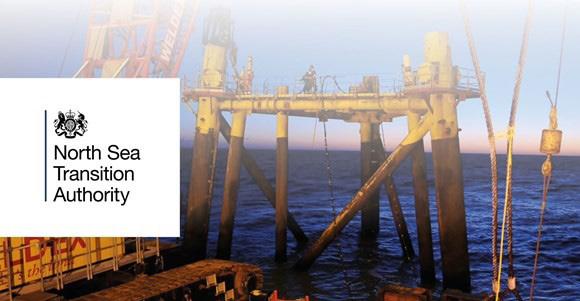
North Sea sector spent £1.6 billion on decommissioning in 2022
• Significant opportunity with £21 billion of UK offshore decommissioning spending forecast in next decade
• 70% of decommissioning work going to domestic supply chain, based on plans submitted in 2022
• NSTA working with industry to drive continuous improvement
The North Sea oil and gas industry spent £1.6 billion decommissioning redundant wells and infrastructure last year, more than in any of the previous five years, new figures show.

The latest North Sea Transition Authority (NSTA) Decommissioning Cost and Performance Report reveals that the industry spent a total of around £8 billion from 2017-22. And activity levels are expected to remain high, with about £2 billion a year forecast to be spent on decommissioning in the next decade, a massive opportunity to keep developing skills and experience in the basin and help the supply chain win lucrative contracts overseas by reinforcing its status as global leader.
Encouragingly, UK suppliers are in line to secure around 70% of the work associated with UK North Sea decommissioning projects listed in Supply Chain Action Plans (SCAPs) lodged with the NSTA last year. This indicates the sector is living up to its North Sea Transition Deal pledge to ensure at least half of spending on decommissioning projects goes to the UK supply chain, as well as meeting its legal obligation to clean and remove infrastructure once fields stop producing.
The industry has also built an impressive track record of carrying out decommissioning projects cost-efficiently and safely due to its willingness to share learnings and data – and embrace new technologies and innovative commercial models.
Achieving further improvements will be challenging, however, in the face of factors including heightened demand for equipment, vessels and services from other regions and sectors, such as offshore wind – which have pushed up prices, taking the total cost estimate for decommissioning to £40 billion.
The NSTA is confident that industry can overcome these hurdles and meet its cost-efficiency target – lowering the estimate to £33.3 billion by end-2028. However, operators must strive to deliver their agreed schedules and commitments, work even more collaboratively with the supply chain and share their plans earlier, ensuring resources are available at the right time.
The NSTA is providing ongoing support by introducing new key performance indicators and benchmarks – developed with industry and underpinned by the collection of new datasets, including the length of time taken to complete specific tasks, the number of crew members employed, and the types of vessels used. The new metrics will provide a more complete picture of how well decommissioning projects are being planned and executed, helping identify opportunities for industry to improve its overall performance and realise cost efficiencies.
This complements the NSTA’s existing efforts to support the sector by sharing best practice, setting clear expectations on well decommissioning deadlines, and encouraging operators to repurpose oil and gas infrastructure for energy transition projects.
The NSTA also promotes the use of its Energy Pathfinder portal, which advertises upcoming tendering opportunities, and expects more operators to support and contribute to the Decommissioning Data Visibility project, launched in 2021 alongside the Decommissioning and Repurposing Taskforce (DaRT).
Pauline Innes, NSTA Director of Supply Chain and Decommissioning, said:
“The North Sea decommissioning sector is highly active and productive, and the industry is ideally placed to realise the massive £21 billion opportunity which will come its way over the next 10 years.
“However, operators must redouble their commitment to collaborate with the supply chain and plan even more effectively if they are to overcome challenging market conditions and remain competitive on cost. The NSTA will continue to use its powers and influence to support the industry as it strives for continuous improvement, including through the development of new benchmarks.”

Bob Fennell, DaRT co-chair and North Sea executive vice president at Harbour Energy, said:
“It is critical that North Sea operators work together to ensure that oil and gas assets which, at the end of their production life, cannot be repurposed to support new technologies like carbon capture and storage, are decommissioned safely and in the most cost-effective manner. Collaborating and sharing data is an important first step to providing the supply chain with the visibility and confidence they require to meet UK demand for such works in a timely and costcompetitive way.”
DECOMMISSIONING
Read more here
SPONSORED BY
54 www.ogv.energy I September 2023
The Decommissioning of Oil And Gas Facilities in Nigeria Review
Types of Decommissioning
There are two categories of decommissioning, namely; Onshore and offshore decommissioning.
Onshore decommissioning encompasses the comprehensive process of extracting all surface equipment, production tubing, and uncemented casing from a well. To effectively seal the well, specific segments of the wellbore are injected with concrete material to establish isolation between reservoir fluids and ensure their confinement both within the reservoir and to prevent their migration to the surface.
Nigeria’s oil-rich environment has positioned it as a significant energy producer in Africa, boasting one of the largest oil reserves on the continent, along with substantial proven gas reserves. The commercial-scale discovery of oil in Olobiri, a rural village in Bayelsa state, in 1957, exemplifies the nation’s growing petroleum activities, resulting in the creation of over 170 offshore oil and gas installations.
As petroleum activities continue to flourish, the pressing question arises – how will Nigeria handle the inevitable disuse and abandonment of onshore and offshore oil and gas infrastructure?
The answer lies in decommissioning, a concept that addresses the sustainable removal and disposal of these facilities, safeguarding the environment and public safety.
This article explores the significance of decommissioning in Nigeria, and how the Petroleum Industry Act 2021 addresses these critical issues.
Decommissioning refers to the decision and procedure made, regarding the condition of oil and gas installations after they are no longer in operation, to minimize their impact on the environment and other legitimate interests.
According to the United Kingdom Energy Act 2008, decommissioning is the physical removal and disposal of outmoded installations at the end of their useful life, which includes the operator’s and the government’s plan of action.
Offshore decommissioning is quite complicated, Offshore production facilities comprise two distinct components. Firstly, there is the topside, commonly referred to as the platform, which denotes the visible structure positioned above the waterline. This component is typically transported to shore to recycle or repurpose it. Secondly, there exists the substructure, encompassing the components submerged beneath the water’s surface and the equipment situated on the seabed, commonly referred to as the mudline. The substructure is generally separated approximately 15 feet below the mud line, extracted, and subsequently transported to shore for recycling or refurbished for utilization in an alternative location. The well is effectively plugged by employing cement, as described earlier for onshore wells. Subsea pipelines or power cables are often allowed to remain Insitu. Nevertheless, their removal may become necessary if they pose environmental risks or impede navigation or commercial fishing operations.
Decommissioning under the petroleum industry act 2021

The aim of the Petroleum Industry Act (PIA) is to establish a comprehensive legal, governance, regulatory, and fiscal framework for the Nigerian petroleum industry, which also addresses matters related to the development of host communities. To achieve these objectives, the PIA establishes two principal regulatory bodies: the Nigerian Upstream Petroleum Regulatory Commission and the Nigerian Midstream and Downstream Petroleum Regulatory Authority.

Repsol Sinopec Taps Archer for $165 Million Decommissioning Project in North Sea

Repsol Sinopec Resources UK has awarded a $165 million decommissioning contract to Archer to execute the plug and abandonment (P&A) of 30 wells in the Fulmar Field and two wells in the Halley Field in the UK North Sea.

The contract is a fully integrated P&A project, covering the complete work scope, including a modular P&A rig, well services, and well engineering, Archer said.
The Fulmar scope includes the removal of the existing drilling facility and the installation of one of our P&A rigs.
In addition, Archer said it would deploy its P&A well services offering to reduce time and cost to plug each well.
This new contract will start immediately, and Archer expects integrated offshore P&A operations to start in the second half of 2024 or early 2025.
Dag Skindlo, CEO of Archer, said the estimated value of the integrated contract stands at roughly $165 million spread over the next four to five years.
"We have noted an uptake in interest and tender proposals for such holistic P&A models, and we believe that this contract and similar project awards will drive growth in both turnover and profitability.
The permanent plugging and abandonment of oil and gas wells is an essential activity as the world decarbonize on the road to netzero. Our goal is to industrialize the P&A process and spearhead innovation to cut operators’ P&A costs globally," Skindlo said.
Adam Sheikh, Repsol Sinopec’s VP of Decommissioning and Energy Transition said: "We aim to deliver one of the North Sea’s most ambitious decommissioning programs in the years ahead – including the full decommissioning of our Fulmar Alpha Asset. This contract award represents a significant milestone in our decommissioning journey, and my thanks go to the teams for the vast amount of work to get us to this stage. As a company we intend to deliver decommissioning work as cost-effectively as possible whilst minimising environmental impact. We look forward to working closely with our partner Archer to safely deliver this decommissioning scope of works on our Fulmar Alpha facility”
DECOMMISSIONING SPONSORED BY DECOMMISSIONING
55
STATS & ANALYTICS
Offshore Field Development Update
Offshore O&G-related engineering, procurement and construction (EPC) contract award value year-to-date is estimated at US$23.7 billion (excluding letters of intent). This represents US$3.2 billion of EPC contract award value recorded over the last month. Although no subsea tree contract awards were announced during the period under review, Westwood has recorded a total of 196 subsea tree unit awards year-to-date, approximately 2,000km of SURF and about 1,000km of subsea line pipe. For production platforms, 11 floating production units have been awarded in 2023, including seven FPSO units, two FLNG units and two semisubmersibles (semis).
Major contract awards recorded during the period under review include three offshore contracts awarded to Saipem, valued at approximately US$1.7 billion. The award includes the engineering, procurement, construction, installation and commissioning (EPCIC) work scope at Eni’s Bouri Gas Utilisation Project (BGUP) offshore Libya. The second contract is for offshore marine activities relating to BP’s Argos floating production, semisubmersible (FPSS) unit in the US GoM, whilst the third contract is for the conversion of the Scarabeo 5 semi into a separation and boosting floating production unit (FPU) for Eni’s Marine XII LNG project offshore Republic of Congo. Saipem also won an EPCI contract for a 30-inch 160km subsea pipeline and associated fiber optic cable for OMV’s Neptun Deep project in the Black Sea offshore Romania. The period also saw CNOOC receive approval to expand its Xijiang 30-2 field resulting in a contract award to Shenzen Chiwan Sembawang for the fabrication of an 11,000-tonne jacket, and China Offshore Oil Engineering Company (COOEC) will be responsible for the platform topsides, featuring 32 well slots.
Other notable awards include an award to Corinth Pipeworks to supply 118km of longitudinally submerged arc-welded steel pipes (SAWL) for Chevron’s Leviathan project, along with Abu Dhabi’s National Petroleum Construction Company (NPCC) contract to replace 125km of a 20-inch pipeline for ADNOC’s Umm al-Lulu development (UAE). Elsewhere in the Middle East, McDermott announced an EPCI award for a 32-inch 190km subsea pipeline for Qatar Energy’s North Field Compression (NFC) phase I project offshore Qatar.

Given the significant volume of active EPC tenders, Westwood forecasts anticipate an additional US$34.8 billion of offshore O&G-related EPC contract award value for the remainder of 2023.

Offshore Drilling Rig Update
The global committed jackup count averaged 406 units in July. The marketed available and cold-stacked jackup counts now stand at 30 and 56, respectively, while marketed committed utilisation and total utilisation were 93% and 83%, respectively. During the month, a total of seven new contracts were awarded, amounting to 1,851 days (5.1 rig years) of backlog added. Petronas Carigali has contracted three jackups to drill offshore Malaysia and Indonesia, where the PV Drilling I will also be commencing a two-year charter in 4Q 2023.
The global committed semi count came in at 68 during July. There are 11 available and 16 cold-stacked rigs remaining in the fleet. Marketed utilisation dropped to 86% during the month, with total fleet utilisation remaining at 72%. Five new contracts and four options were exercised in July, one of which was an extension awarded to Transocean Encourage by Equinor, keeping the rig engaged offshore Norway until February 2026. Finally, the drillship count dropped by one unit to 79 during the month, leaving four marketed units available plus 13 cold-stacked rigs. Marketed committed and total utilisation dipped to 96% and 83%, respectively. Three new contracts were awarded in July, including a 24-well deal for Deepwater Invictus with Woodside Energy offshore Mexico beginning in 2026.
Offshore Wind Update
Since the last update, first power was produced at the 496MW Saint-Brieuc wind farm which is located offshore France. The first of 62 Siemens Gamesa SG 8.0-167 DD turbines was installed in May 2023, and it began supplying power to the grid in July. First power was also produced in July at the 498MW Fecamp wind farm, which is also located offshore France. Fecamp also features Siemens Gamesa turbines and a total of 71 SWT-7.0-154 turbines will be installed at the project site.
Dominating headlines was news that Germany concluded a record-breaking lease auction which has brought in almost US$14 billion in option fees. The rights to develop a total of four offshore wind sites, which have a combined capacity of 7GW was awarded. The winners were BP and Total Energies. BP won the rights to develop two wind farms which have an individual capacity of 2GW and special purpose vehicles, owned by TotalEnergies, were awarded the development rights to one 2GW project and one 1GW project.
Finally in Lithuania, a partnership of Ignitis Renewables and Ocean Winds were announced as the provisional winners of Lithuania's first offshore wind tender. The rights to develop a 700MW offshore wind farm have been awarded in this tender. The partnership submitted the highest development fee with a bid price of US$22 million. The final award is expected to be announced in 3Q 2023, once the screening of compliance with national security interests is completed.
Westwood Global Energy Group

are specialist providers of detailed market intelligence for the offshore energy sector, covering; offshore rigs, production facilities, subsea equipment, subsea services, offshore marine and offshore renewables and power.
www.westwoodenergy.com
STATS & ANALYTICS PROVIDED BY
56 www.ogv.energy I September 2023



Offshore Energy Services Dashboard July/August 2023 STATS & ANALYTICS SPONSORED BY 57
Opportunities in the Middle East
HFI's recent endeavours have been largely directed towards the promising opportunities that are arising from Saudi Arabia. The energy market has been notably propelled by Saudi Aramco's substantial capital expenditure program. Equally significant is HFI's focus on both the Abu Dhabi and UAE market, which has been driven by ADNOC's ambitious expansion initiatives. Qatar, too, warrants attention due to significant LNG investments made by Qatar Energy in recent years.
Recent market analysis, including insights from the Energy Industry Council (EIC), depict an energy market surpassing $600 billion within the inner Middle East region. When you take into account the peripheral regions there is over a trillion dollars worth of opportunities.
However, thriving in this market is not easy and requires a number of steps. The introduction of a new and distinctive product is crucial, as lacking differentiation can lead to failure. It is a very mature market, therefore you need to bring advanced technology and knowledge. There are a lot of challenges with local partners, and one of the keys to success in the region is finding the right local partner with a deal that works for all involved parties.
As well as this, the right management team and increasing emphasis on localisation can be crucial to finding success in the region. Finally, it is essential to not underestimate the amount of time and investment that is needed to make your mark in the Middle East. A measured, carefully planned, and patient approach is necessary to grow and ultimately be successful.
HFI is a specialist professional services firm led by Hugh Fraser, a Scottish corporate/energy lawyer with over 30 years’ experience in the international energy sector.

We support clients to establish, expand and divest their international businesses through strategic, value-added consulting and legal services, combining specialist know-how, connections, local partners and execution expertise.
Our focus is on ventures which combine advanced energy technology and know-how with opportunities in the key territories of the Middle East region including joint ventures, acquisitions and divestments.
www.hfi-consulting.com


Small steps play a key role in a sustainable energy transition
By Laura Petrie and Clare Munro., Brodies LLP.

When considering how to engage in energy transition in the UK market, it is easy to quickly get lost in the volume of information available. However, one common theme in all transition guidance is the need for organisations to be proactive.
While carbon capture and storage, electrification of offshore platforms and hydrogen generation are the headline energy transition projects, there are smaller incremental steps that all companies can be focusing on to help contribute to the UK's energy transition.
Decarbonising

As well as the bigger picture of reducing oil and gas usage, decarbonisation also focuses on addressing smaller areas where CO₂ emissions can occur and actively finding ways to reduce this. This can include increasing insulation in buildings to be more energy efficient, undertaking a more regular maintenance and assessment plan for tools and machinery to make them as energy efficient as possible, or sourcing more local suppliers to reduce delivery mileage, offsetting higher prices with reduced delivery costs and waiting times. Undertaking these small changes can have a significant impact on the decarbonisation of business activity and can also improve cost efficiencies and performance. These changes can be required or provided for in contract terms, to ensure that organisations demonstrate their commitment to decarbonising their businesses. This has the added benefit of making such organisations more attractive for customers, investors, and partners when being assessed
for ESG compliance and, where required, in demonstrating to regulatory bodies that proactive steps are being taken.
Just Transition
Just transition has become the buzzword for finding the best way to support not just businesses but also employees, communities and society generally through the energy transition. Just transition requires organisations to consider how best to support the local communities and workforce that will be impacted by the reduction in fossil fuel use, and demonstrate how transition projects will create benefits other than simply profit. By investing in renewable technology, re-training employees to work with that new technology, and engaging with local communities to develop the upcoming workforce, organisations can ensure that there are resources ready to support the energy supply through the transition, and to build a stable industry in the future. Again, employment terms and/or contractual terms can be adapted to provide for these obligations or opportunities and demonstrate a company's commitment to a just transition.
People Power
Encouraging employees to participate in energy efficient practices and incentivising their engagement demonstrates a commitment to energy transition on a wider scale. This can either
be as part of formal terms of employment or through providing access to information, support and initiatives. Implementing organisational changes as part of employee benefit packages, such as using electric vehicles for company car arrangements or providing cycle or travel scheme loans, improves energy efficiency for individuals and the company. Furthermore, incentivising the use by employees of initiatives such as Pawprint or other climate action trackers engages and empowers them to support the company in developing its sustainability model and broadens the responsibility for energy transition beyond being solely a corporate focus.
Small Changes, Big Impact
While energy transition will ultimately rely on the development of larger scale projects and infrastructure to provide an alternative to fossil fuels, the progression of small, incremental changes that focus on reduction of emissions and more sustainable practices will help to smooth the way for the bigger changes.
LEGAL & FINANCE LEGAL & FINANCE SPONSORED BY
SCAN QR CODE TO WATCH FULL VIDEO
FRASER INTERNATIONAL 58 www.ogv.energy I September 2023
Clare Munro and Laura Petrie are oil & gas partners at Brodies LLP.
HUGH
UPCOMING GLOBAL EVENTS 2023
SPE Offshore Europe 2023


5 -8 September 2023
Aberdeen, Great Britain
Engineering Chemistry For The Energy Transition Conference & Exhibition




7 September 2023
Aberdeen, Great Britain
Gastech Exhibition & Conference 2023

11-14 September 2023
Milan, Italy
Solar Power International 2023

11-14 September 2023
Anaheim, USA
Argentina Oil & Gas Expo 2023

11-14 September 2023
Buenos Aires, Argentina
Brazil Windpower 2023


12-14 September 2023
San Paulo, Argentina
HUSUM Wind 2023

12-15 September 2023
Jakarta, Indonesia
Electric & Power Indonesia 2023

13-16 September 2023
Jakarta, Indonesia
Oil Sands Trade Show & Conference 2023

13-14 September 2023
Ft. McMurray, Canada
Geofluid 2023
13-16 September 2023
Piacenza, Italy
Mozambique Gas Summit & Exhibition 2023

13-14 September 2023
Maputo, Mozambique
Oil & Gas Asia 2023


13-15 September 2023
Kuala Lumpur, Convention Centre
South East Asia Australia
Offshore & Onshore Conference 2023
13-14 September 2023
Darwin, Australia
Delivering unique and valuable travel management solutions for companies operating in the Energy sector.
EVENTS
VIEW ALL EVENTS AT
Experts in travel management
www.travelctm.co.uk GET IN TOUCH
www.ogv.energy/events
59











































 dual graphite seals
taper lock grips
dual graphite seals
taper lock grips










































































 By Tsvetana Paraskova
By Tsvetana Paraskova










































































































































































































































































































































































































































































































































































































































































































